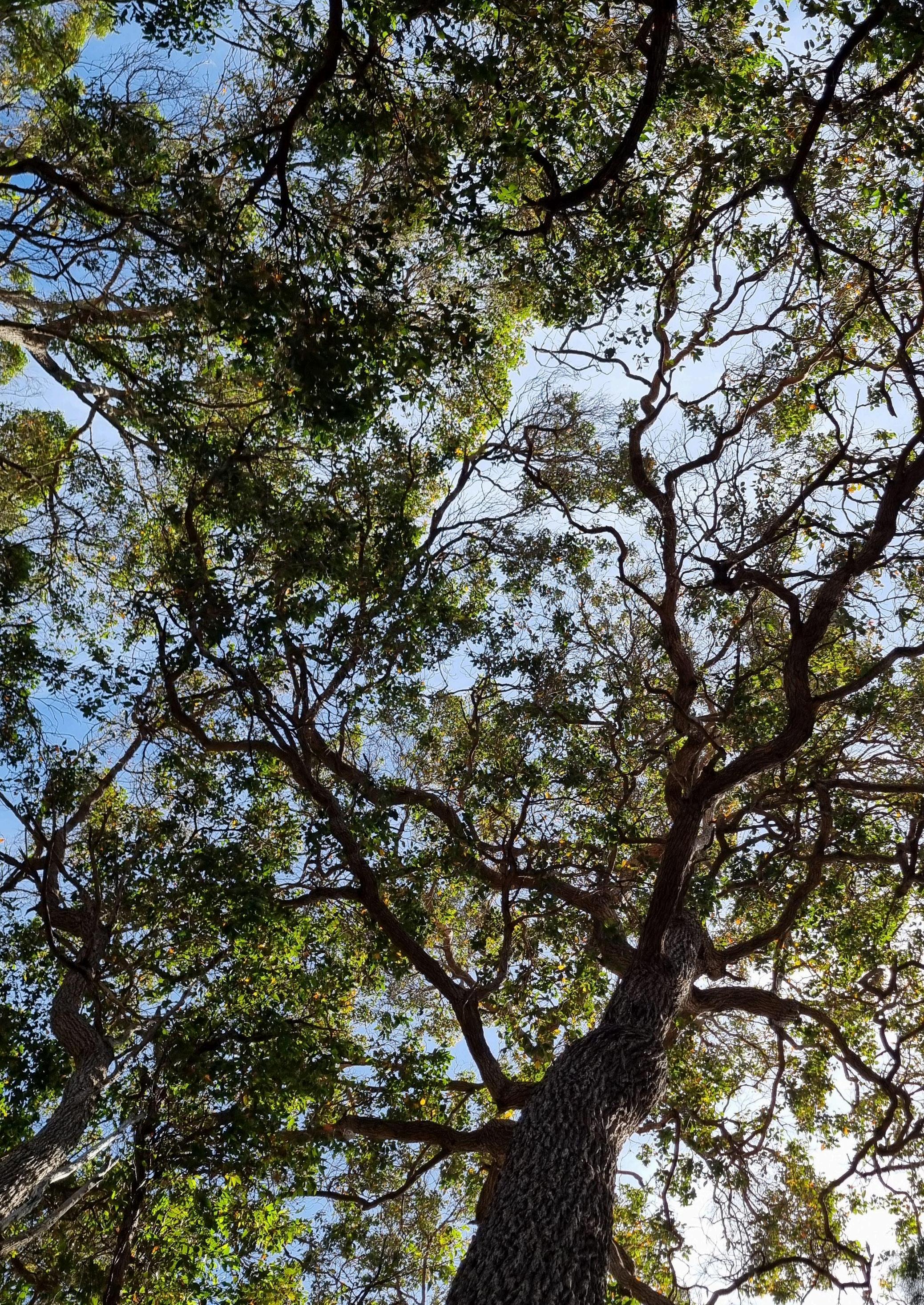

DESIGNING WITH COUNTRY
Our Approach
We acknowledge and respect Traditional Owners across Australia as the original custodians of our land and that these lands were never ceded. We recognise community’s continued connection to land, waters, sky and people, and their responsibilities of caring for Country. We honour Elders past and present whose knowledge and wisdom has ensured the continuation of cultures and traditional practices, and will continue to ensure it. We appreciate their guidance that is shared with us.
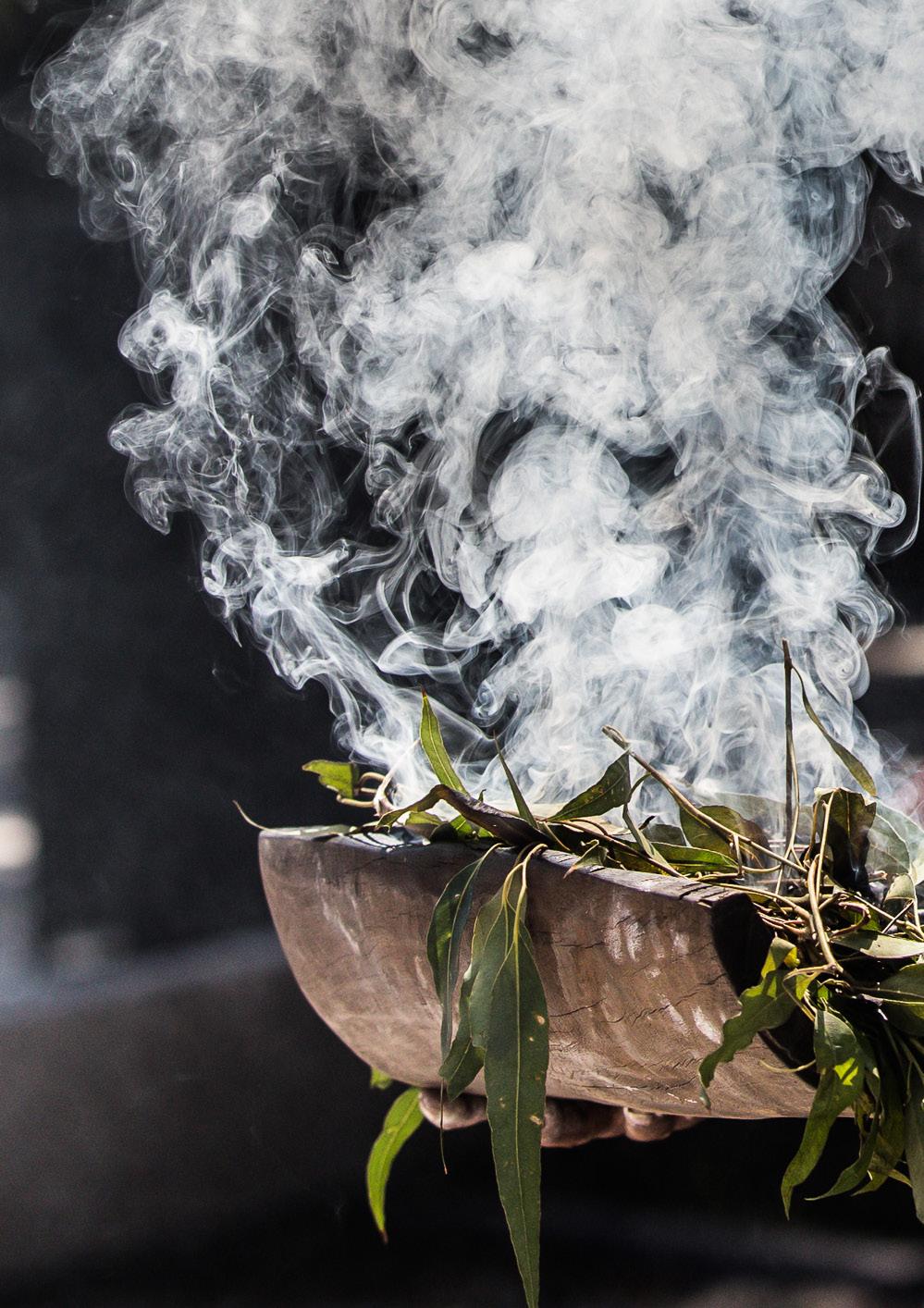
This document outlines ASPECT Studios’ approach to designing with and on Country across all of our Australian studios. Country is important to us because as landscape architects and designers from many backgrounds, we care for the environment deeply and through design, seek better connections between people and all that surrounds us. There is much for us to learn from Traditional Custodians and this document marks a single point in time along that journey.
Throughout the document, reflecting the diversity of our practice, we make reference to Aboriginal and Torres Strait Islander people as Traditional Custodians, First Peoples, First Nations Peoples and Traditional Owners of the lands we work on.
“ Our design process reveals the essential qualities of place, the landscape, its history, social rituals and cultural significance. We champion creative solutions that enrich the way that people interact with place.
We challenge a business-as-usual approach and anticipate emerging cultures, allowing our diverse projects to stand out. We practice design to advocate for a symbiotic relationship between the human and natural environments. We believe in the deep connectedness of all living things. ”
These statements compel us to explore a deeper understanding of place, drawing upon Indigenous knowledge, history and culture, whilst the latter suggests the opportunity for us to advocate for truth-telling through the integration of Indigenous culture and history within public spaces (where appropriate and supported by Traditional Custodians) to encourage discourse about reconciliation and a shared future.
Whadjuk Noongar Country
Perth Studio
Kaurna Country
Adelaide Studio
Wurundjeri Woi-Wurrung Country
Melbourne Studio
Gadigal Country
Sydney Studio
Yagara and Turrbal Country
Brisbane Studio
Map Credit: Australian Institute of Aboriginal and Torres Strait Islander Studies 1996. Created by David R
Map of ASPECT Studios Locations
“Many of us reading this document might claim that we understand what Country means, but without that DNA, that spiritual connection, we can only know at a surface level what Country means and only appreciate it and respect it as best as we can.”
- Jesse-Jane Van Zyl, ASPECT Studios
As Landscape Architects, we work with Country, and we have a strong desire and responsibility to learn more about it. Whether we are working in natural settings or built-up urban areas, the success of our approach to design is fundamentally linked to understanding the connections and natural systems of Country.
To develop a deeper understanding of Country, we appreciate and respect the collective knowledge of First Peoples, which has been passed down over generations across thousands of years. Their resilience and connection to Country is one that we can learn much from—particularly how we can work and design with Country without harming it, ensuring the ongoing sustainability of place design.
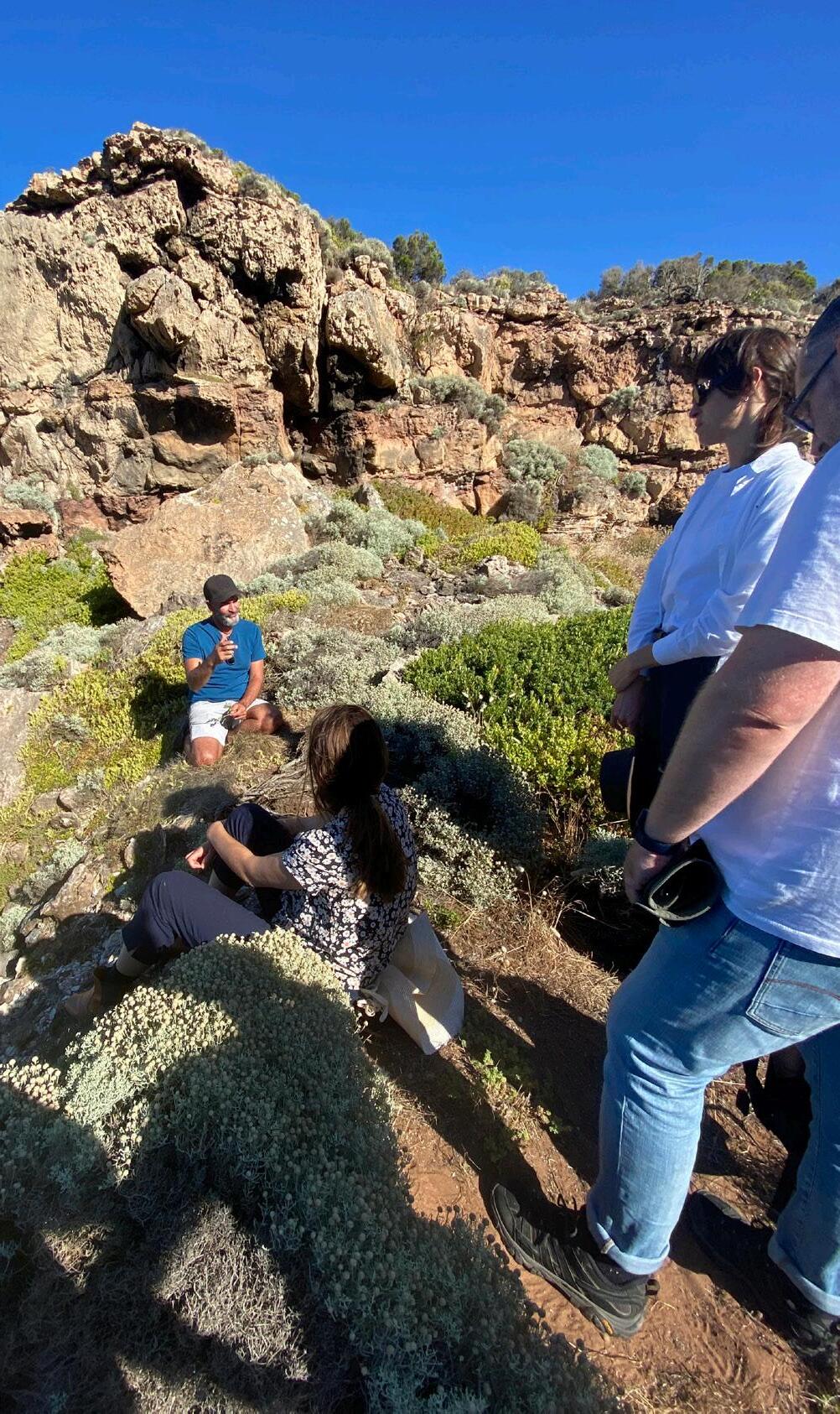
We seek guidance from Traditional Custodians by building strong, trusting relationships. This guidance, shared through an indigenous way of knowing, takes many forms—from broad conversations with Elders and community members on Country, to conversations identifying key requirements within projects.
This guidance benefits us in further developing our understanding of Country through the complex woven layers of culture, ecology and community. In turn this shared understanding developed through a genuine relationship with Traditional Custodians provides a unique richness in design and project outcomes.
Walk on Maar Country with John Clarke, Eastern Maar Aboriginal Corporation
Our Understanding of Country
Through our ongoing conversations with First Peoples, we’ve learned that Country is much more than just the physical landscape. It is a holistic concept that encompasses a profound and deep relationship with the land, sky, waters, plants, animals, ancestors and spirits of the natural world. It encompasses everything, both living and non-living. First Peoples identify themselves as an intrinsic part of their Country and have a deep spiritual connection that goes back tens of thousands of years.
Caring for Country
Traditional Custodians of Country have a responsibility to care for and preserve its health and pass on cultural knowledge for future generations. First Peoples know that if they care for Country, Country cares for them. There is reciprocity. We understand that we have a role here also—we share this responsibility of looking after Country for ongoing sustainability and future generations.
Country and Lore
Country is inherent to lore—the stories and laws that govern social and cultural life, kinship and community responsibilities. We understand that for many First Peoples, identity is bound to specific parts of Country and their traditional duties to those places.
Country is expressed in cultural practices such as ceremonies, songlines, art, language and storytelling. Many of these practices are connected to specific geographical features like rivers, mountains, or landmarks, which are seen as living entities, often the embodiment of the Dreaming.
Designing with Country
A Designing with Country approach understands Country as central to the design process with Traditional Custodians who speak on behalf of Country. The process prioritises understanding the interconnectedness of the relationship between Traditional Owners and Country through Indigenous knowledge, perspectives and spiritual connections.
Why is Designing with Country important?
A Country-centered design approach, in contrast to traditional human-centric methods, honours and highlights the unique cultural, environmental, and social characteristics of place. This requires involvement from Traditional Custodians, ensuring that design decisions are informed by Indigenous knowledge and perspectives.
Landscape architecture is inherently concerned with the cultural and historical context of place. By adopting a Country-centred approach, designs can better reflect and accommodate the traditions, values, and practices of local communities. This not only promotes more sustainable and culturally-appropriate outcomes, but also fosters a deeper appreciation and respect for Indigenous knowledge and ways of being. This cultural richness can have surprising and profound benefits for clients and the natural world.
We believe our role as Landscape Architects is inherently about supporting communities in their ability to care for Country through our profession of design. This requires a multi-layered approach to design thinking that places regenerative and resilient design strategies first, for the long-term health of our environment and society.
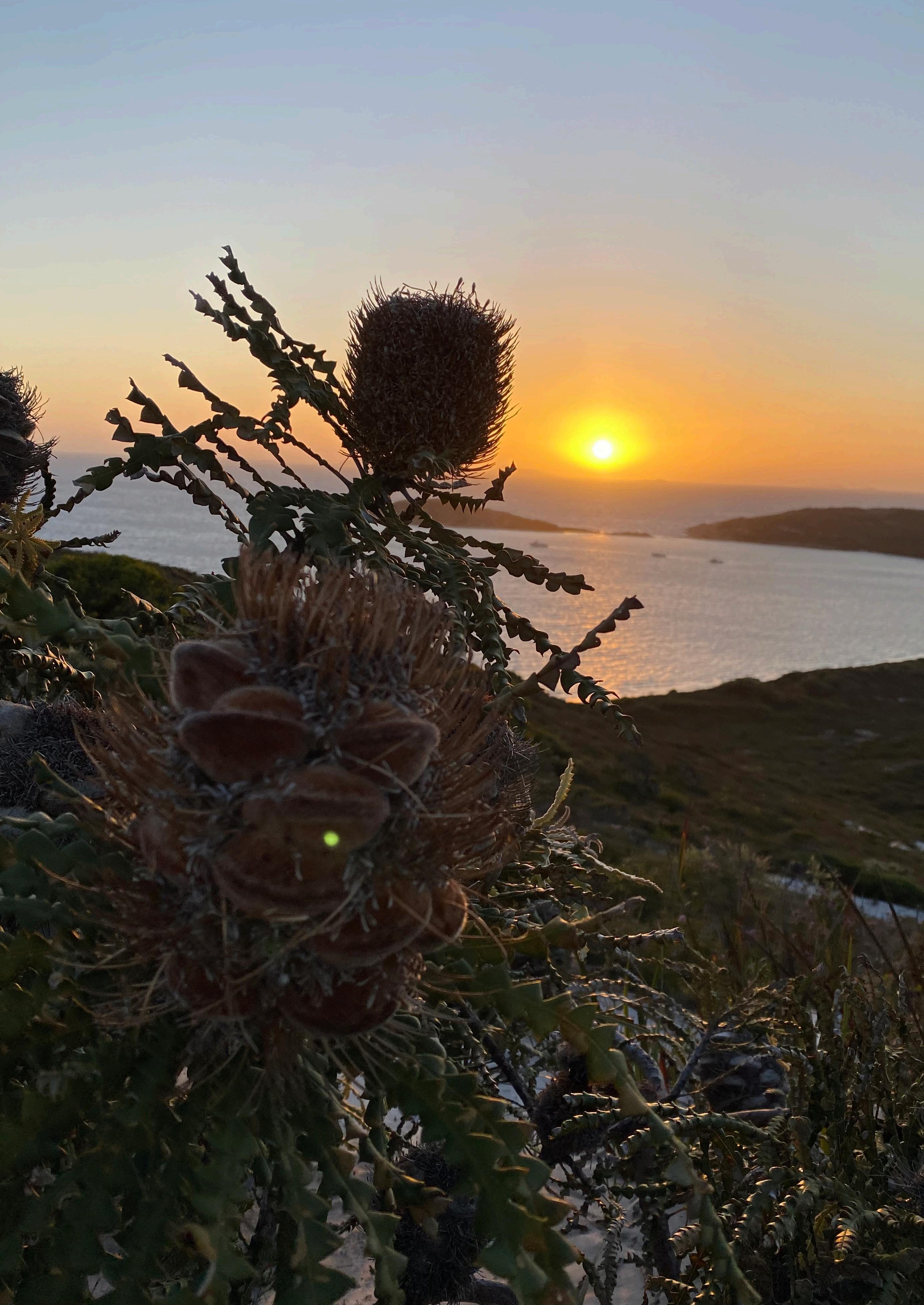
“I view my responsibility first and foremost to community, both professionally and personally. I know that may be difficult to understand in the concept of a project – but I have learnt that when you do put community first – the project outcomes are authentic, responsive to community (and Country) needs, and results in positive outcomes for all involved”
Anne-Marie Pisani, First Peoples’ Partnerships and Design Lead, ASPECT Studios

Aboriginal Cultural Safety
“ Now as an older man, having lived my life on Country, I have a greater understanding of it. The interaction of countless generations, leaving their mark on it, dancing on it, singing on it, hunting on it, living with it, the story it tells is our story. From the whistling winds singing its ancient song, to the fire that comes – from which all life regenerates – it has a soul that is intertwined with ours. It is our beating heart.”
Tommy Day III | Gunditjmara, Yorta Yorta and Wemba
Cultural Safety Principles and Understanding
Cultural safety is about creating a safe and equitable environment for First Peoples wherever we work. This environment should be respectful and supportive of Aboriginal peoples’ cultures, beliefs, and traditions. It is about creating a space that doesn’t challenge or deny one’s identity and is everybody’s responsibility.
Empowerment
Cultural safety is also about acknowledging power imbalances between Aboriginal and non-Aboriginal people. It means ensuring Aboriginal people feel respected, valued, and understood. To maintain a culturally safe environment requires ongoing learning, self-reflection, and actively challenging systems that impact inequality.
Principles of Cultural Safety
We follow six key principles for building trust, promoting equity, and ensuring that services are delivered in a culturally appropriate and respectful manner. These principles are adapted from the National Aboriginal Community Controlled Health Organisation Cultural Safety Standards, 2011.
Wemba man.
Artist, designer and cultural advisor as a regular collaborator with ASPECT Studios
Cultural Safety Principles
1. Self-Determination:
Recognise the right of Aboriginal and Torres Strait Islander communities to control their own affairs and make decisions about their lives.
2. Respect for Culture:
Acknowledge and value Aboriginal and Torres Strait Islander cultures, traditions, and knowledge systems.
3. Participation in Decision-Making:
Ensure that Aboriginal and Torres Strait Islander people are actively involved in decisions that affect them.
4. Equality and Non-Discrimination:
Treat Aboriginal and Torres Strait Islander people with fairness and respect, free from prejudice and bias.
5. Safe Cultural Practice:
Encourage self-reflection by individuals, particularly on personal attitudes and experiences and how this may impact how they communicate and behave with people outside of their own culture.
Encourage a constant state of improvement through ongoing education and cultural growth.
Create an environment that is safe for people, where there is respect for all peoples’ identity. A safe environment is where respect, meaning and knowledge are shared through the experience of learning, living and working together and truly listening.
6. Cultural Sensitivity and Cultural Competence:
Cultural sensitivity extends beyond cultural awareness and encourages self-reflection from each of us, particularly on our personal attitudes and how this may impact our communication and behaviour with others.
Cultural competence is a constant state of improving through ongoing education and our own cultural growth.
For meaningful and genuine collaboration with Traditional Custodians to take place, the process must adhere to these principles.
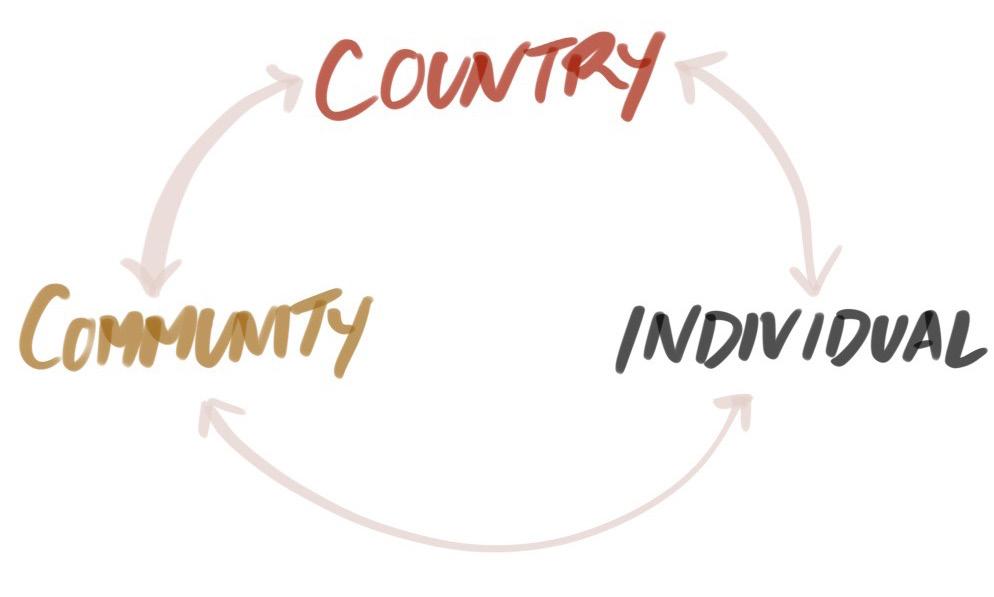
“It was great to be working as one team towards one goal, creating a space that enabled DJAARA culture and people to express our stories of Country – designed in a way that still upholds their integrity in a prominent urban space.”
Bec Phillips, DJAARA artist

In the design of the forecourt, the ASPECT Studios team was a key part of developing trust over a long period of time with Dja Dja Wurrung through listening and a willingness to take on board feedback to achieve a result beyond our expectations. This project has provided a lasting partnership between Court Services Victoria and Dja Dja Wurrung.
David Rolland
Client Project Director, Court Services Victoria, Bendigo Law Courts Project (2020 to 2023)
Bendigo Law Courts Bendigo, Australia
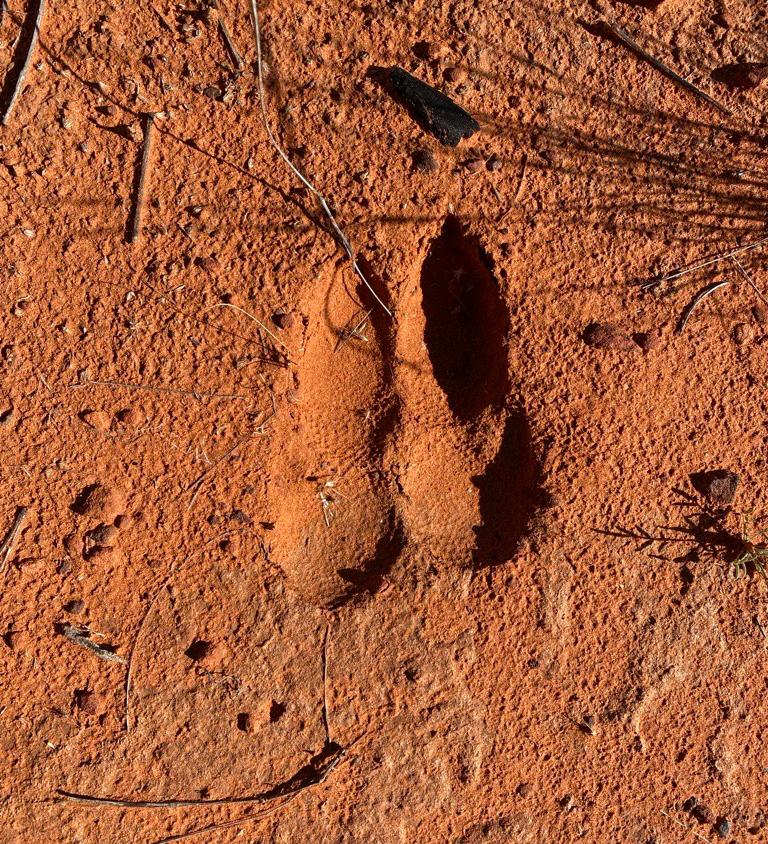
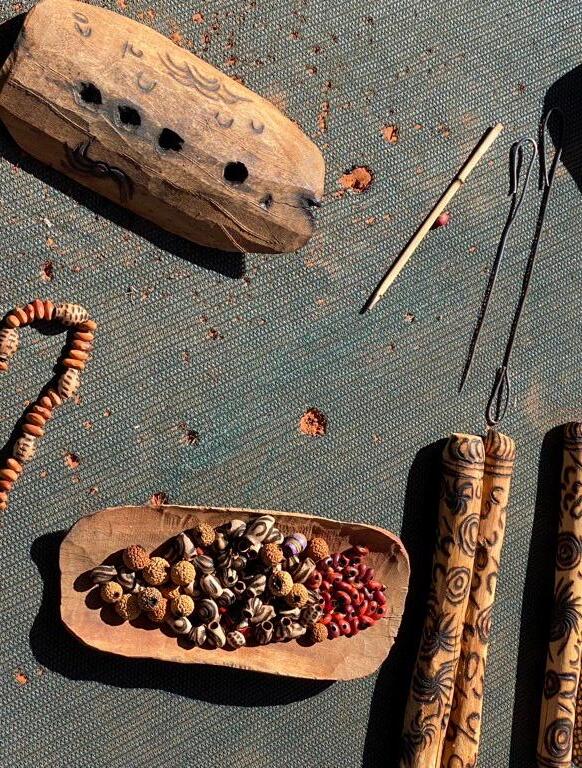
Indigenous Cultural Intellectual Property (ICIP)
The rights of Indigenous peoples over the protection, control, and benefit from the use of their cultural heritage, traditions, and intellectual creations must always be respected and protected from unauthorised use, misappropriation and exploitation.
In our work, we may be privileged to experience elements of traditional knowledge—including wisdom, skills, and practices passed down through generations. This can include environmental knowledge (regarding plants, animals, and ecosystems), medicinal knowledge, agricultural techniques, and spiritual practices. Cultural expressions, traditional or contemporary, may include art, music, dance, stories, symbols, and performances that reflect an Indigenous group’s identity and culture.
Respecting ICIP allows First Peoples to assert their cultural rights and to negotiate the use of their cultural assets in ways that respect their values, interests, and self-determination.
Guided by Community
The approach to designing with Country on any particular project should be guided by the needs and aspirations of Traditional Custodians.
The engagement process often comes as an afterthought in the design process. However, through our experience it is evident that when clients engage directly with Traditional Custodians and knowledge holders early in the process, this allows for genuine collaboration to occur in the planning and design process, resulting in projects that thrive with substantial positive outcomes for both community and client.
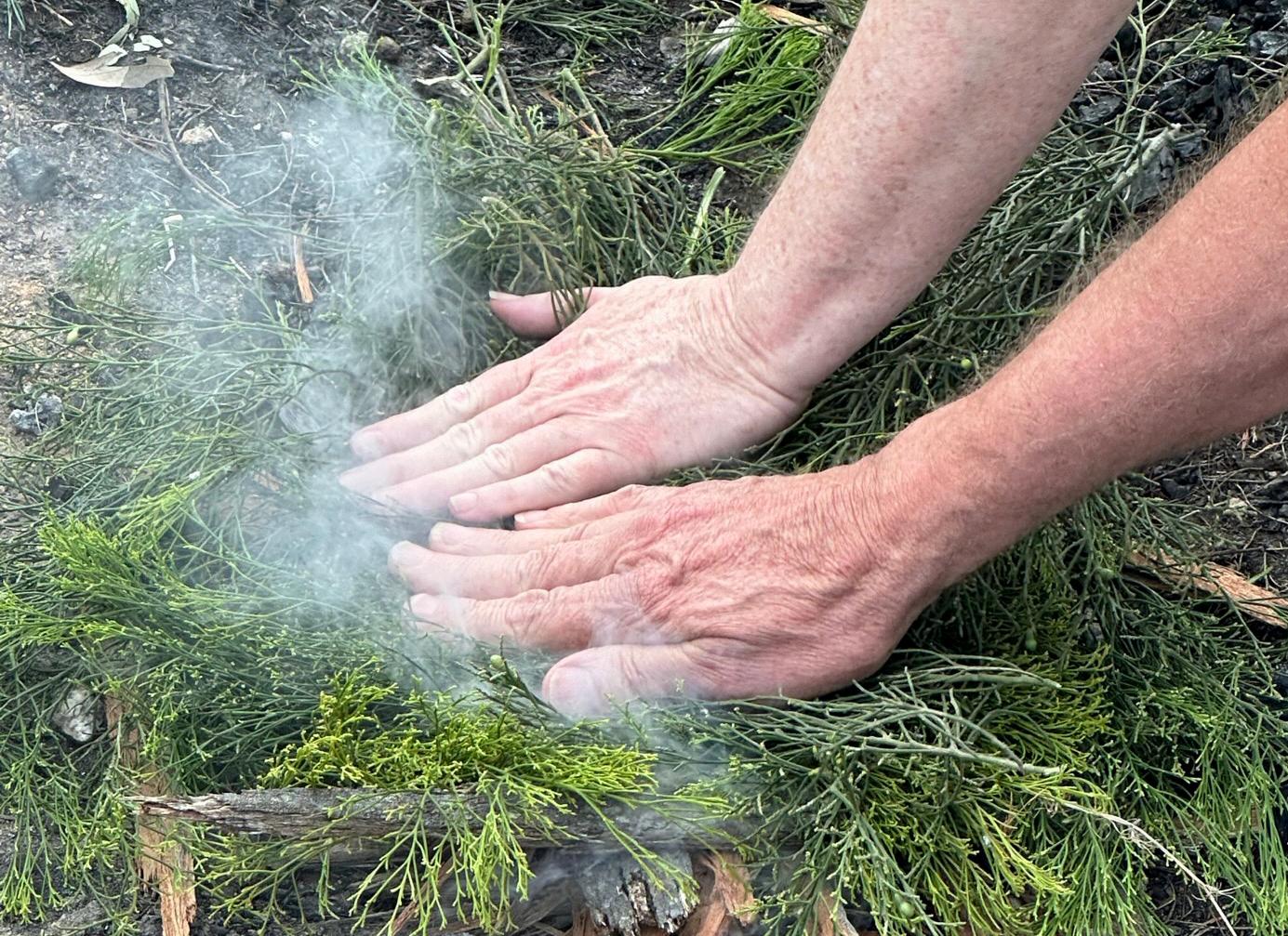
Cultural protocols being demonstrated and taught at commencement of Walk on Country, Wadawurrung Seasonal Calendar Project, Wadawurrung Country, Victoria.
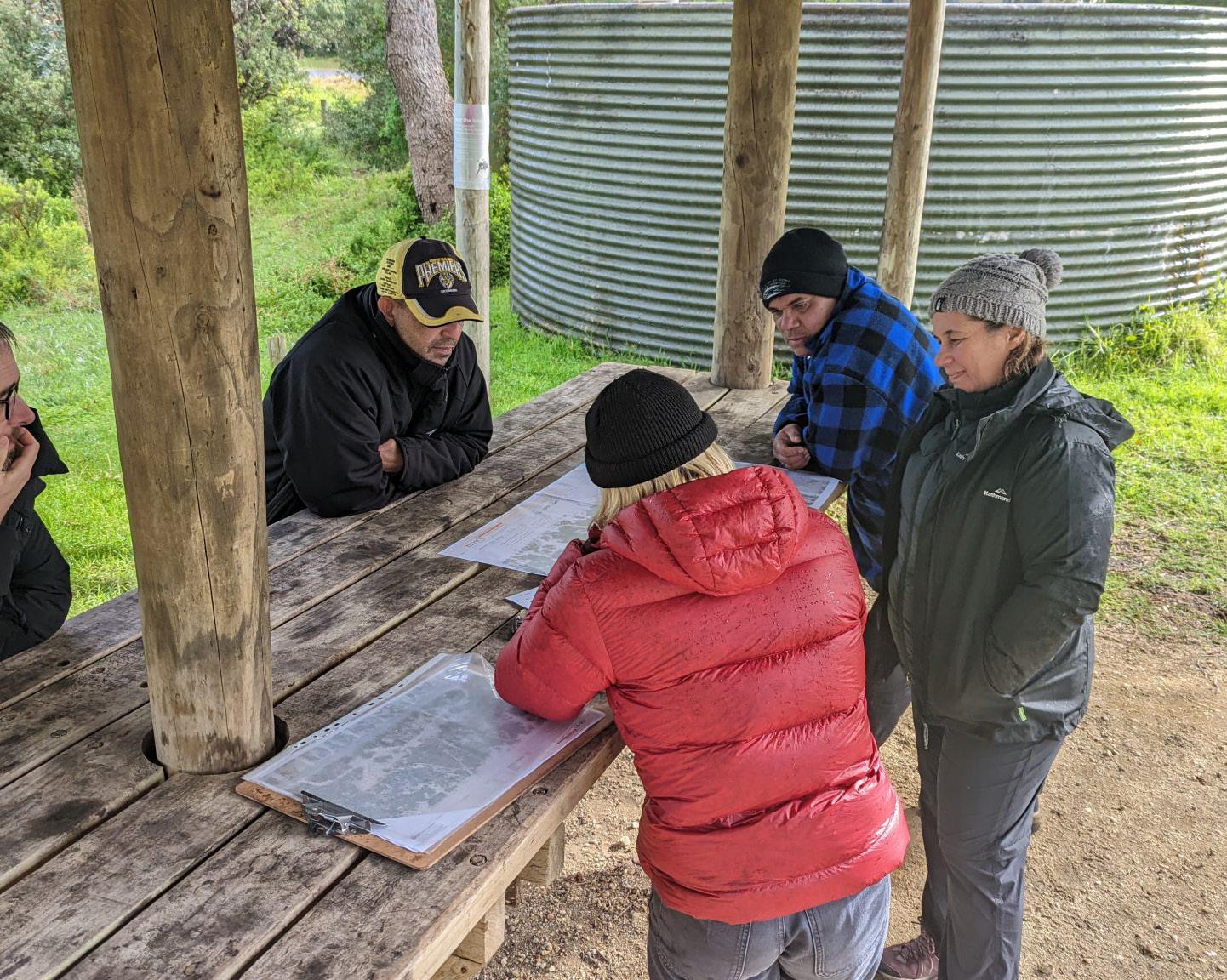
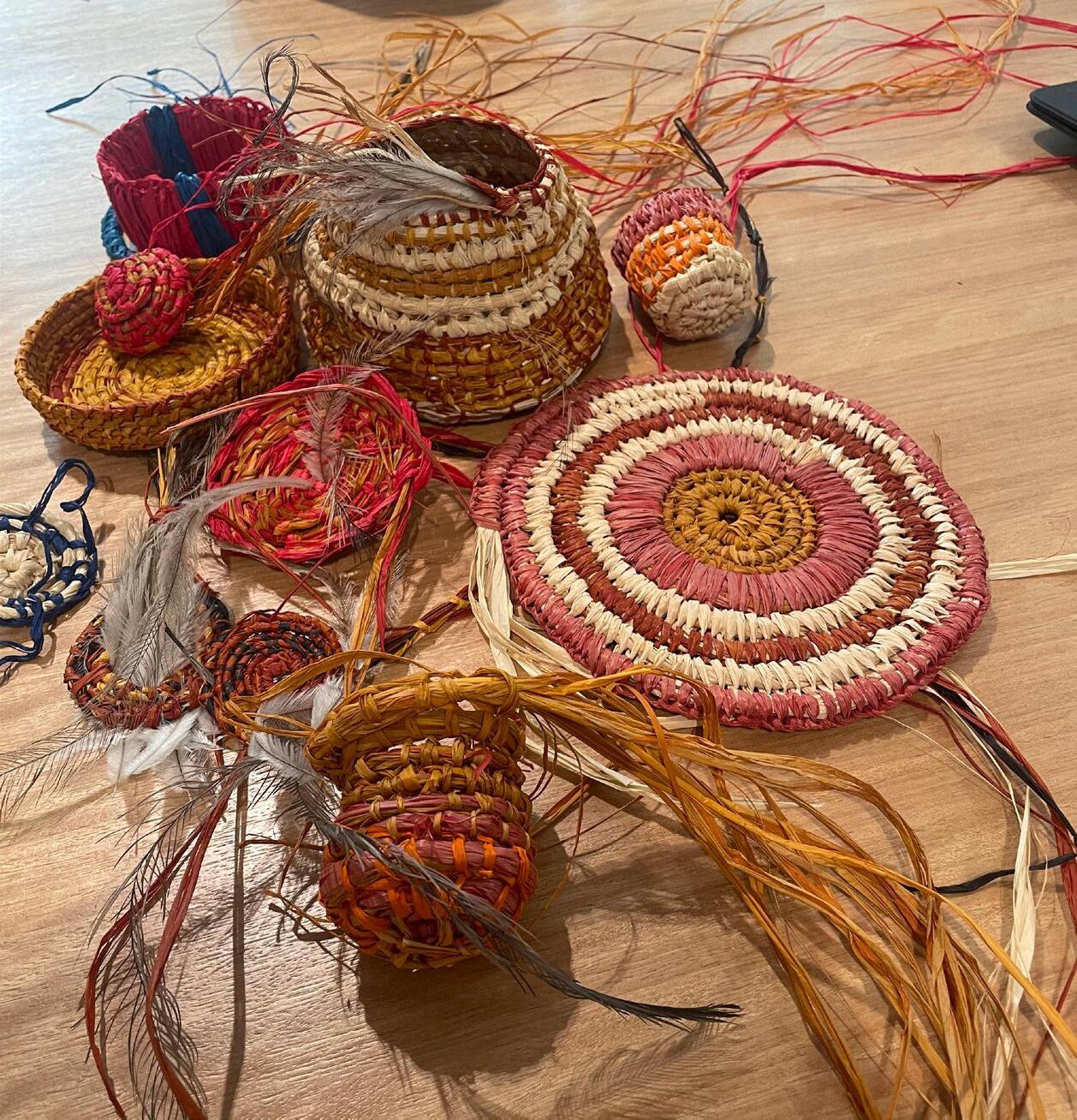

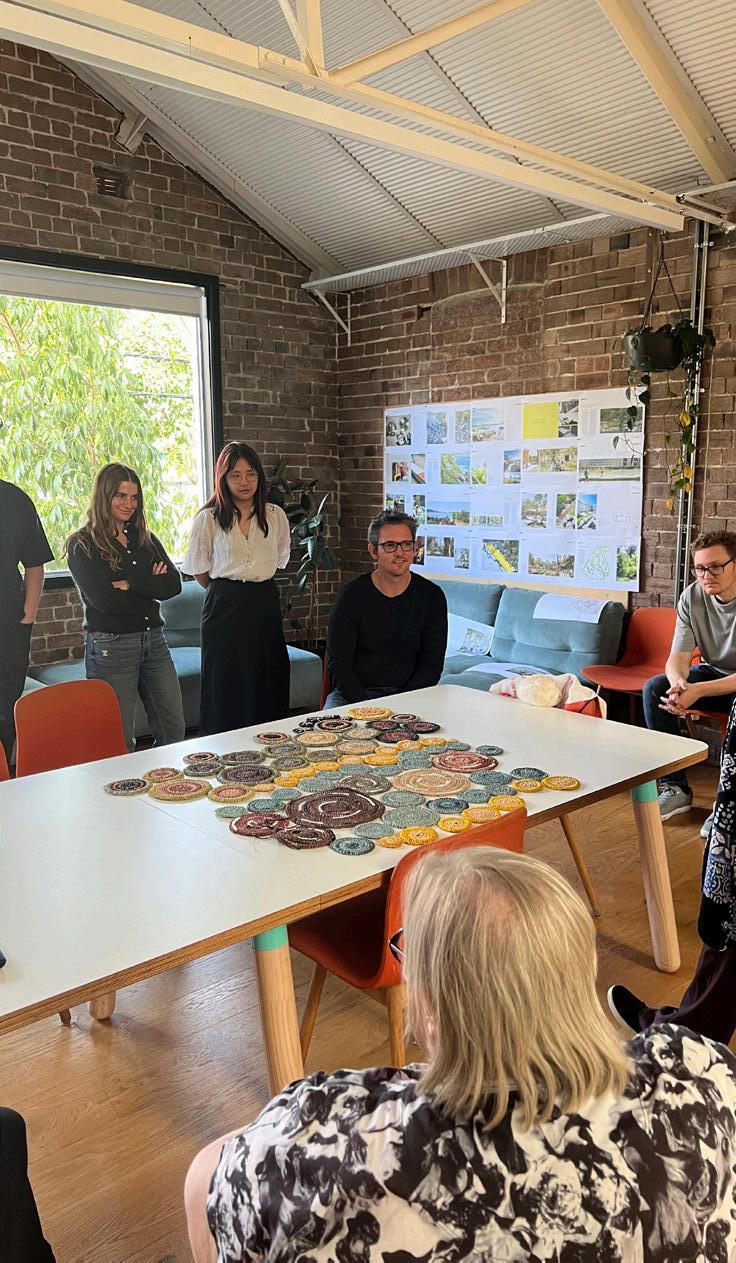
Workshop on Country with Gunaikurnai Land and Waters Aboriginal Corporation (GLaWAC) in joint management with Parks Victoria; Shoreline Drive Precinct Plan, Gunaikurnai Country, Victoria.
A weaving workshop formed part of the engagement process on Bradfield Park, Dharug Nation - Cabrogal clan for an early model of the Woven Play space.
Client presentation of Woven Shelter artwork
Designing with Country Strategy
Our Designing with Country Strategy puts Country at the centre of our design process. This process can be summarised in four key phases.
Sustaining Country
Shaping Country Imagining with Country
Starting with Country
Sustaining Country
Our commitment to regenerative design puts an emphasis on the long term sustainability of our projects for the benefit of local communities. This commitment extends beyond the delivery life of the project. We reflect upon and learn from the experiences shared through our co-designed projects. We actively seek opportunities for co-management of project sites by Traditional Custodians and seek opportunities for employment.
1. Starting with Country
We aim to place Country at the core of our work. To act on this, we advocate for First Peoples representation on our projects. This representation can take many forms, from the commencement of any given project, we believe decisions should be made based on a caring for Country approach.
2. Imagining with Country
We advocate for an Indigenous-led co-design process that shapes the way we imagine a future for Country. We acknowledge Traditional Custodians as the
authority that speaks on behalf of Country, and who are the keepers of knowledge of land, sea and people that can connect the project to local cultures and traditions. This engagement process allows for cultural exchange, builds trust and deepens our people’s connection with Country. This process takes different forms according to cultural protocols and locations across Australia.
3. Shaping Country
We place the project design team together with our client as agents of the design process. Through our collective expertise of design form, spatiality, materiality and creativity as well as our knowledge of standards, planning requirements and guidelines, we enable a shaping of Country into tangible built outcomes. This is achieved through a commitment to agreed Country-centred design principles established at the beginning of the design process and carried through to project completion.
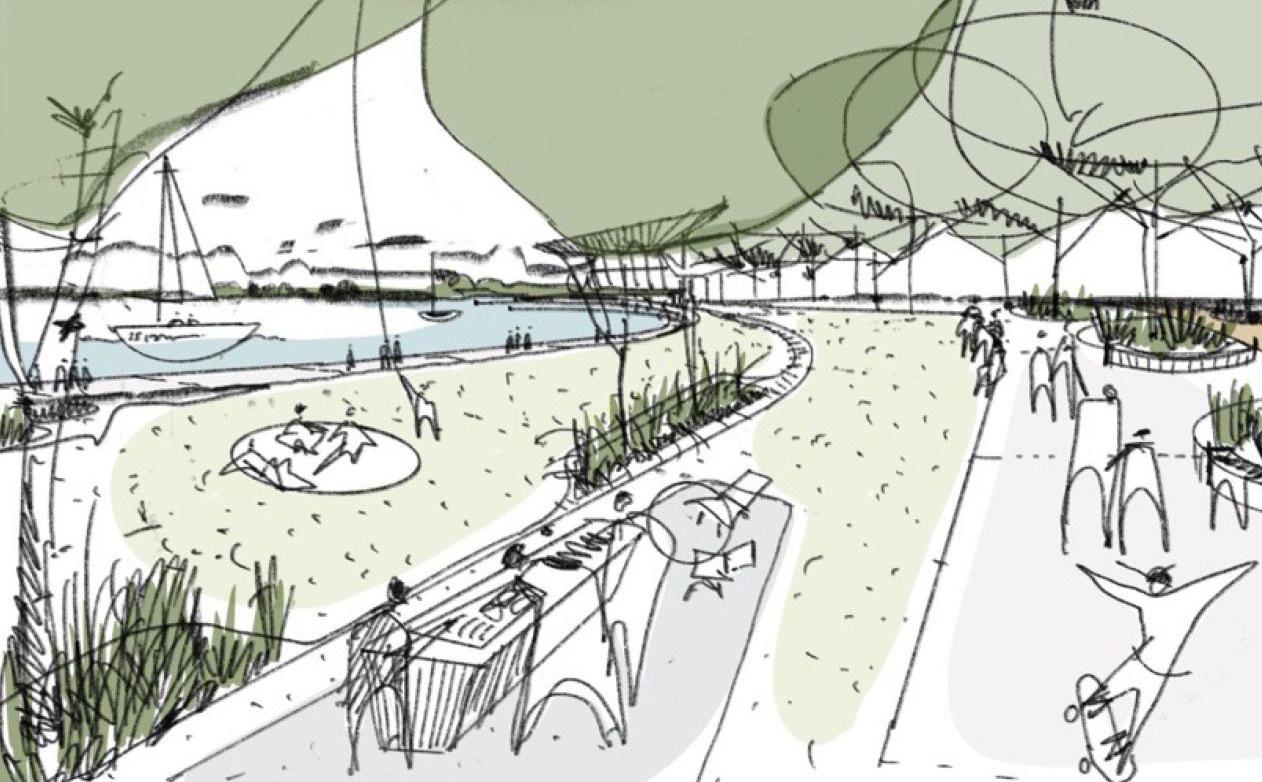
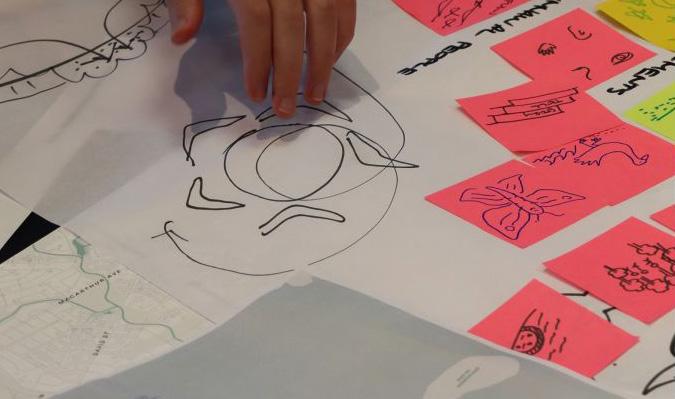
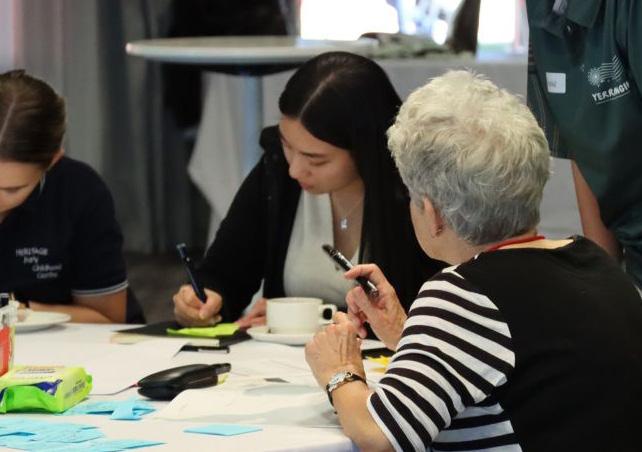

Knowledge to Design - a collaborative process. Our design from Ngamawari in Canberra is brought to life by engaging and consulting with the community, and working closely First Nations artists.
Quay Quarter Lanes Sydney, Australia

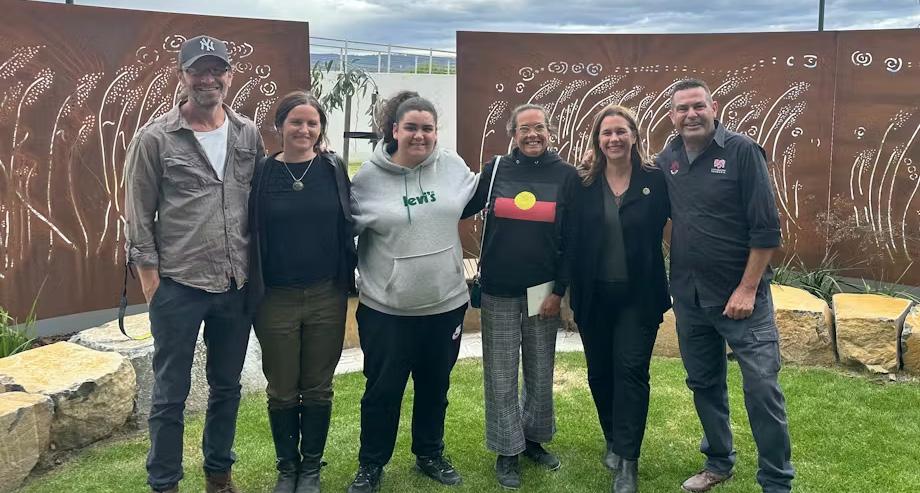
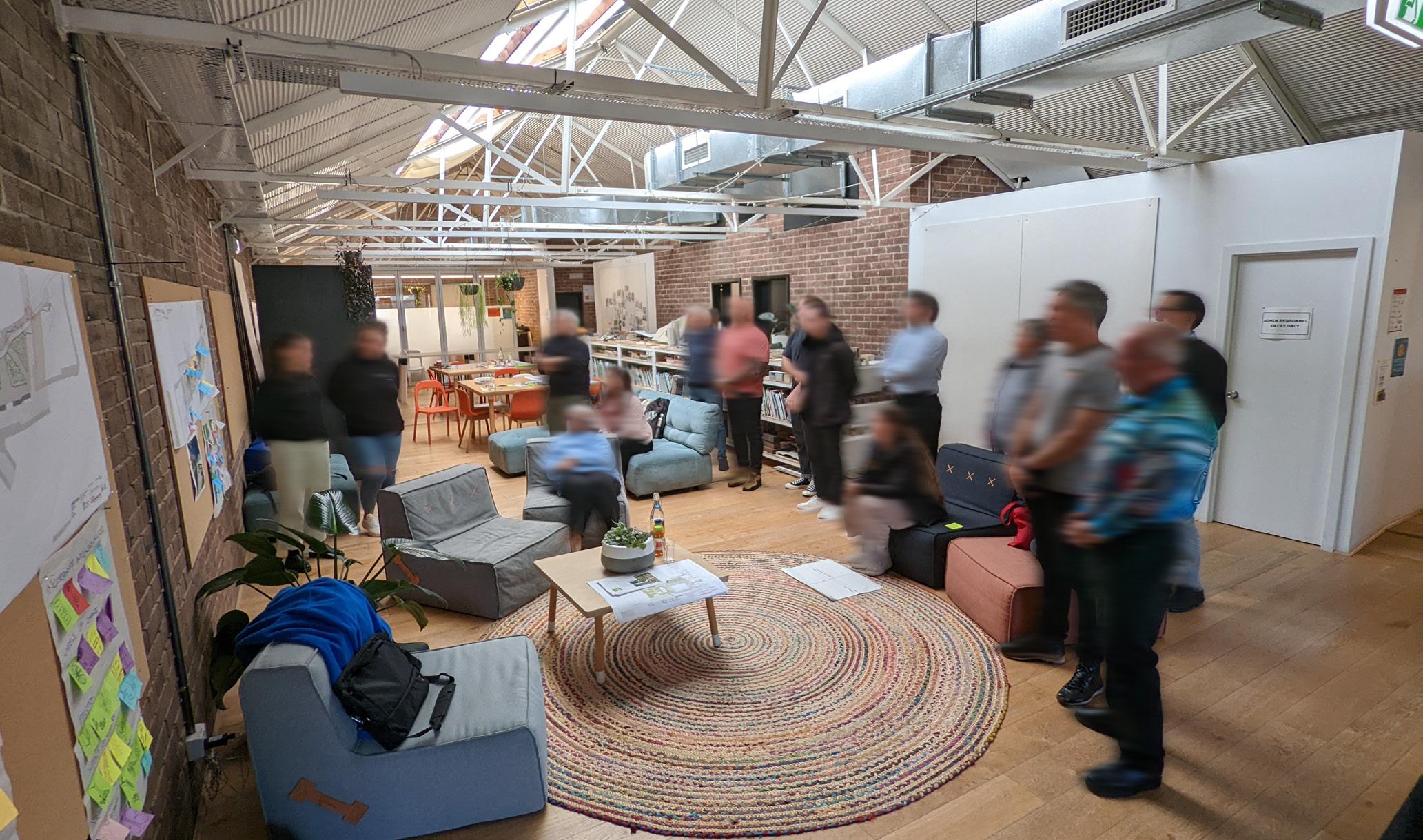
Riawunna Garden, UTAS Inveresk: Left to right: Jerome Dobinson, Amanda Kay, Genie Battese, Lynne Spotswood, Anne-Marie Pisani, Dave Warrener
Reconciliation Week on Whadjuk Noongar Country - Perth
Sydney Harbour Bridge Cycleway engagement process
How
do we measure success of ‘Designing with Country’?
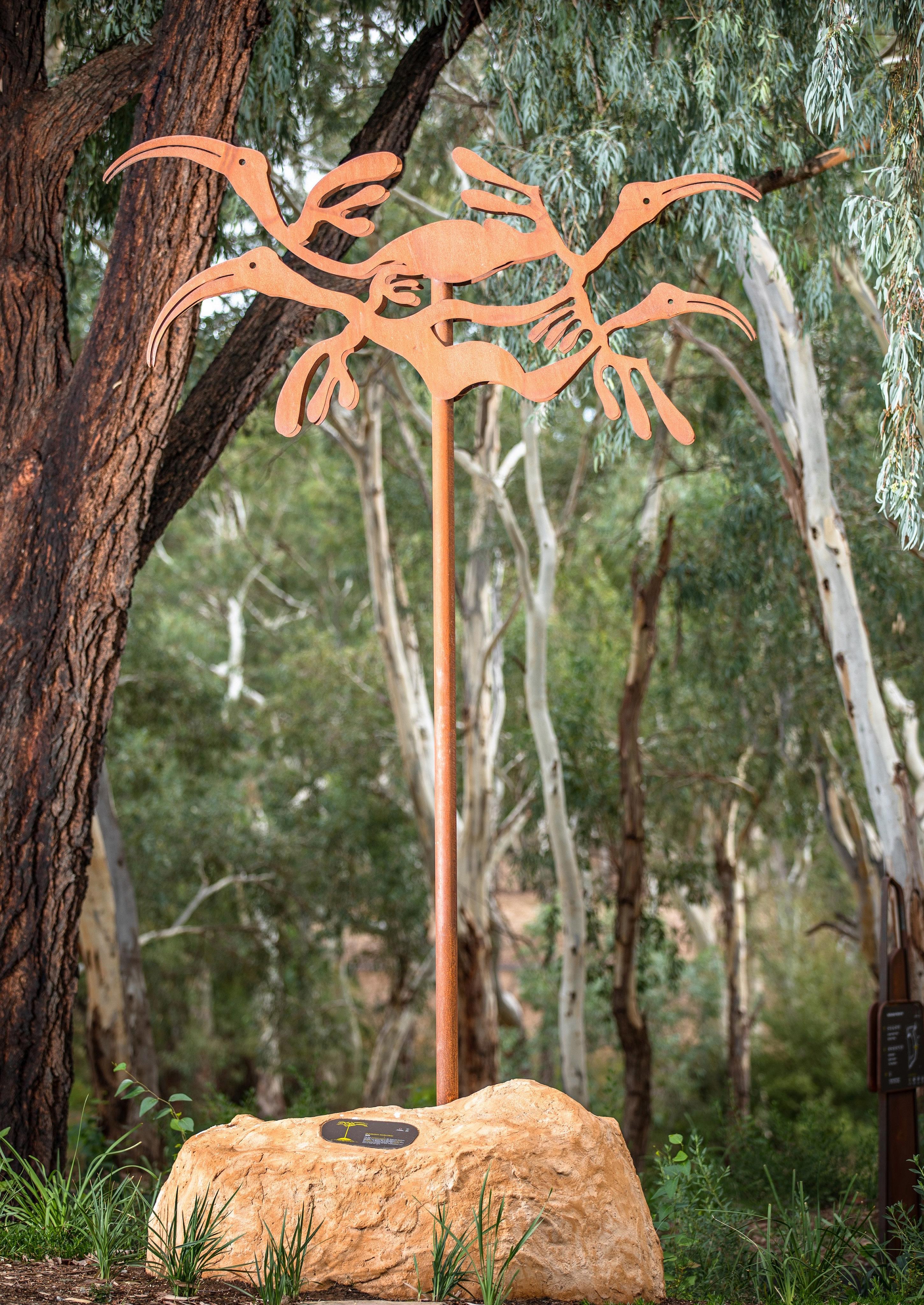
A “Designing with Country” approach has significant benefits for the environment, ecological systems and indigenous communities.
While there are many projects that have demonstrated these benefits through award recognition within the design industry, the most significant benefits are captured through ongoing dialogue with the local communities involved with projects, after the project has been completed.
Key benefits demonstrated by recent delivered projects include:
• Local community ownership of newly created public space.
• Restored ecological systems and regenerated native landscapes that allow people to connect with nature.
• Economic empowerment for Traditional Custodian guides leading tours to share cultural knowledge of a co-designed public forecourt
• Facilitation of Traditional Custodian engagement provided genuine opportunity to enable self-determination through increasing their level of involvement in project at a governance level
• Building of strong relationships between clients and Traditional Custodians through deepening of clients understanding through a close co-design process
• Conversations through genuine engagement provide the opportunity to develop culturally relevant outcomes for community which can aid in the passing on of traditional knowledge to the next generations.
Felixstow Reserve (with Mantirri Design) Adelaide, Australia
Co-Design Frameworks
Collaboration with First Peoples when designing with Country is often referred to as co-design, reflecting a process where we as designers are led by the ideas and vision shared by our collaborators. Through our collective experience, there are a number of co-design frameworks that we use to guide our design process. The frameworks are shaped according to the client needs, scale, type of project and the level of involvement that Traditional Custodians have capacity for in any given project. The four key framework types highlighted below ranges from a level of engagement, where ASPECT Studios leads the co-design process, through to a Client-led engagement approach.
Type A
ASPECT Studios led with direct engagement with Traditional Owners
Type B
ASPECT Studios led with specific Indigenous team member (internal or external)
Type C
External engagement consultant - building on existing relationships
Type D
Client-led consultation

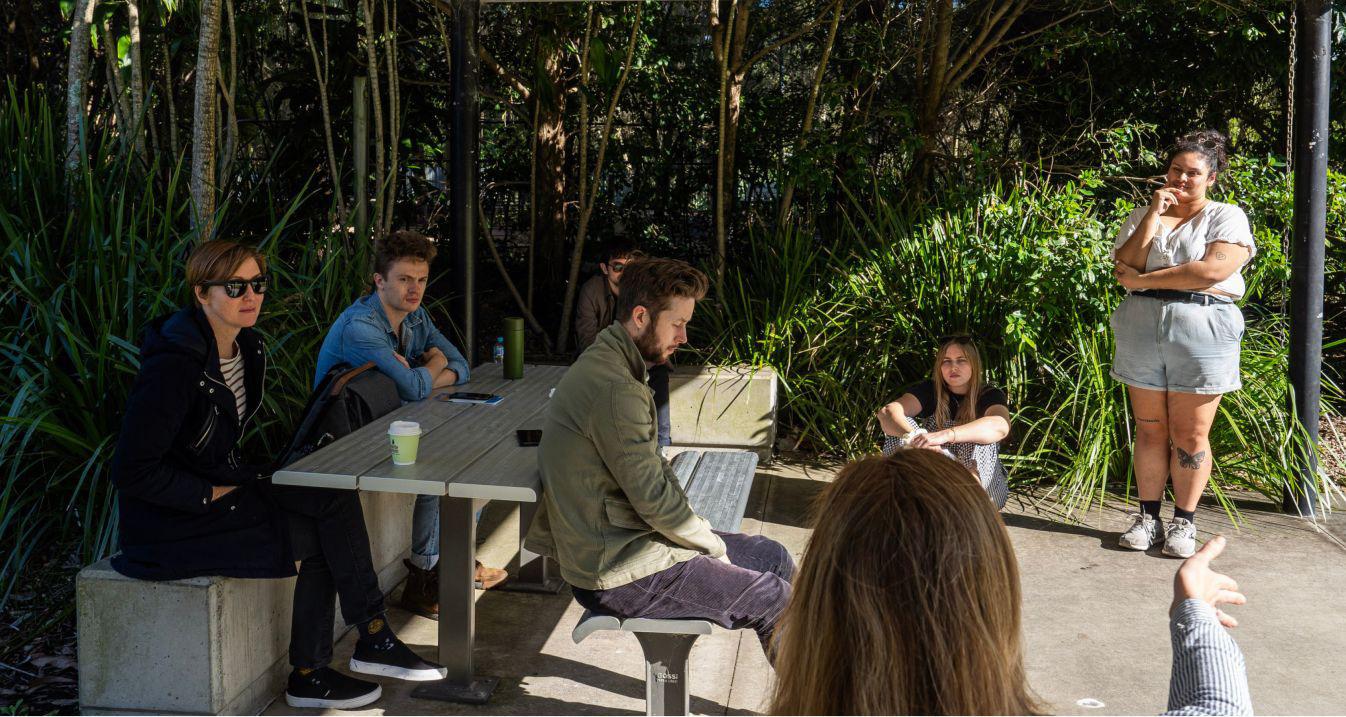
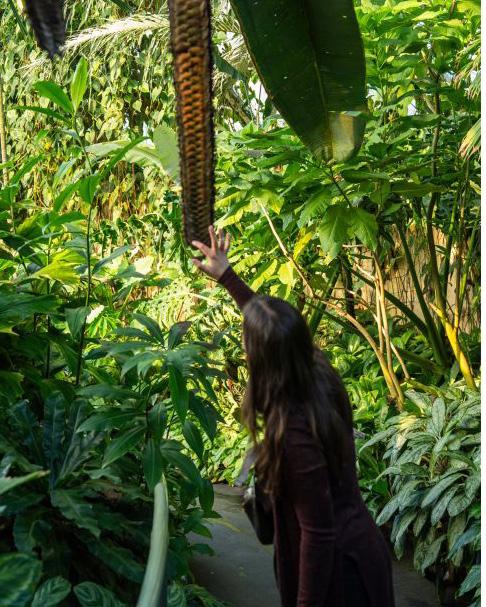

The ASPECt Studios Brisbane team marked NAIDOC Week with a visit to the Mt Coot-tha Botanic Gardens, to share stories and experiences of Country-centred design, and to formulate strategies for connecting with and designing for Country on future projects.
NAIDOC Week smoking ceremony, Whadjuk Noongar (Perth) Studio
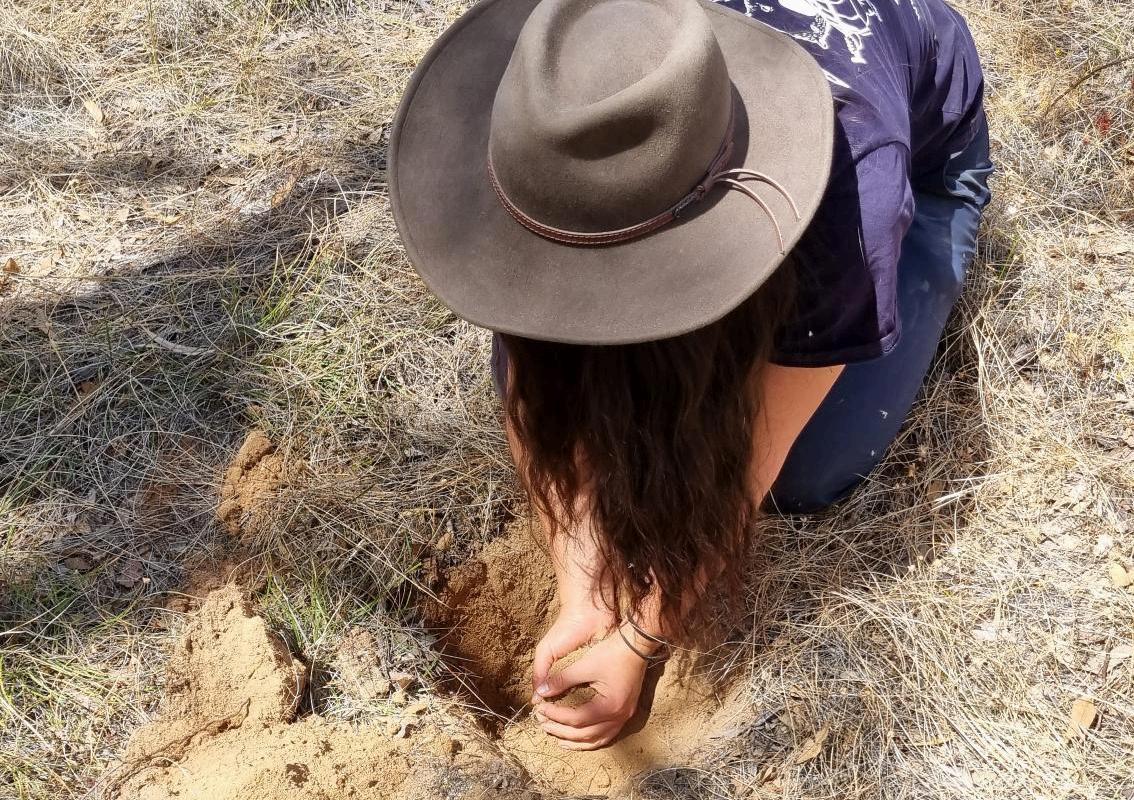
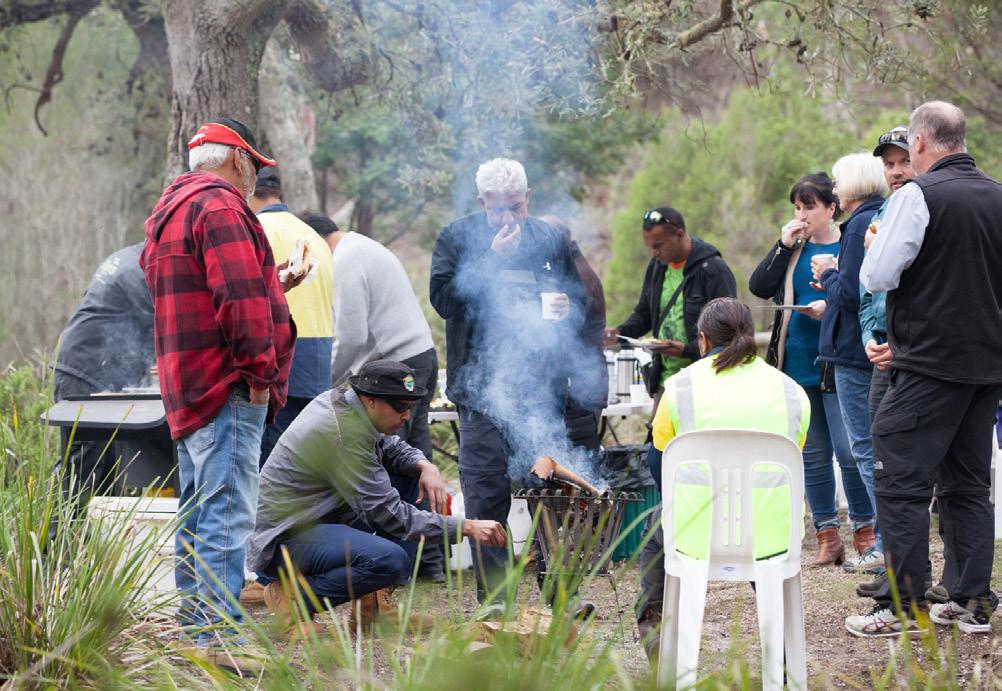
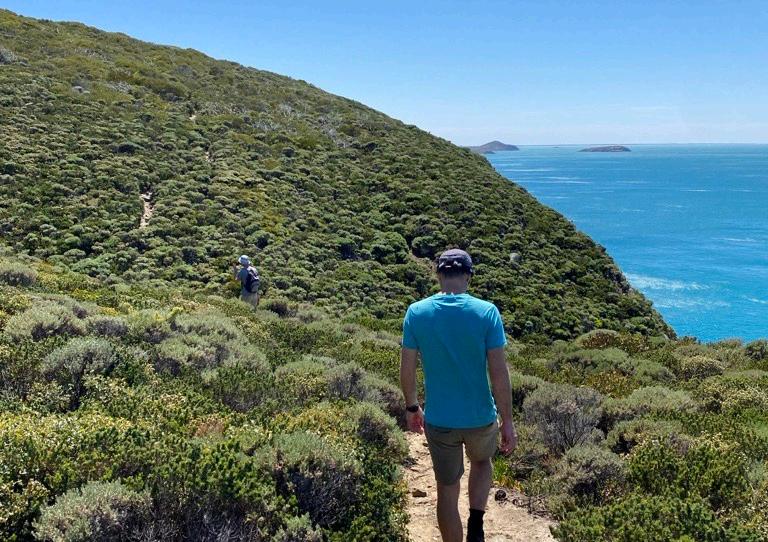
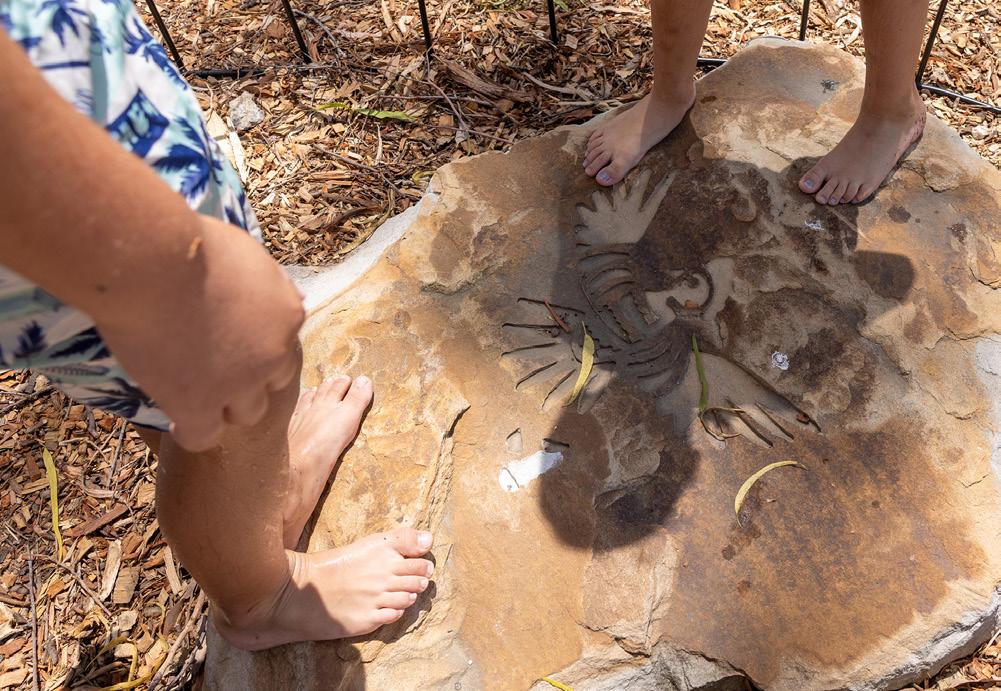
Design Benefits
The benefits of a Designing with Country approach can be seen across Australia in many high profile and award-winning projects. Aboriginal architecture, landscape architecture and design has the power to elevate our experience and understanding of place.
Design opportunities include;
• Telling songlines that reveal a deeper knowledge of place
• Sharing knowledge that educates the wider community – both truth-telling and positive histories about courage, determination and healing
• Cultural practices
• Traditions and ceremony
• Employment and co-management
We are fortunate to have been involved across a number of such projects and in the following pages, highlight some key case studies from each region.
Learning from traditions and culture
Supporting living systems Places of translation
Reflect and healing spaces
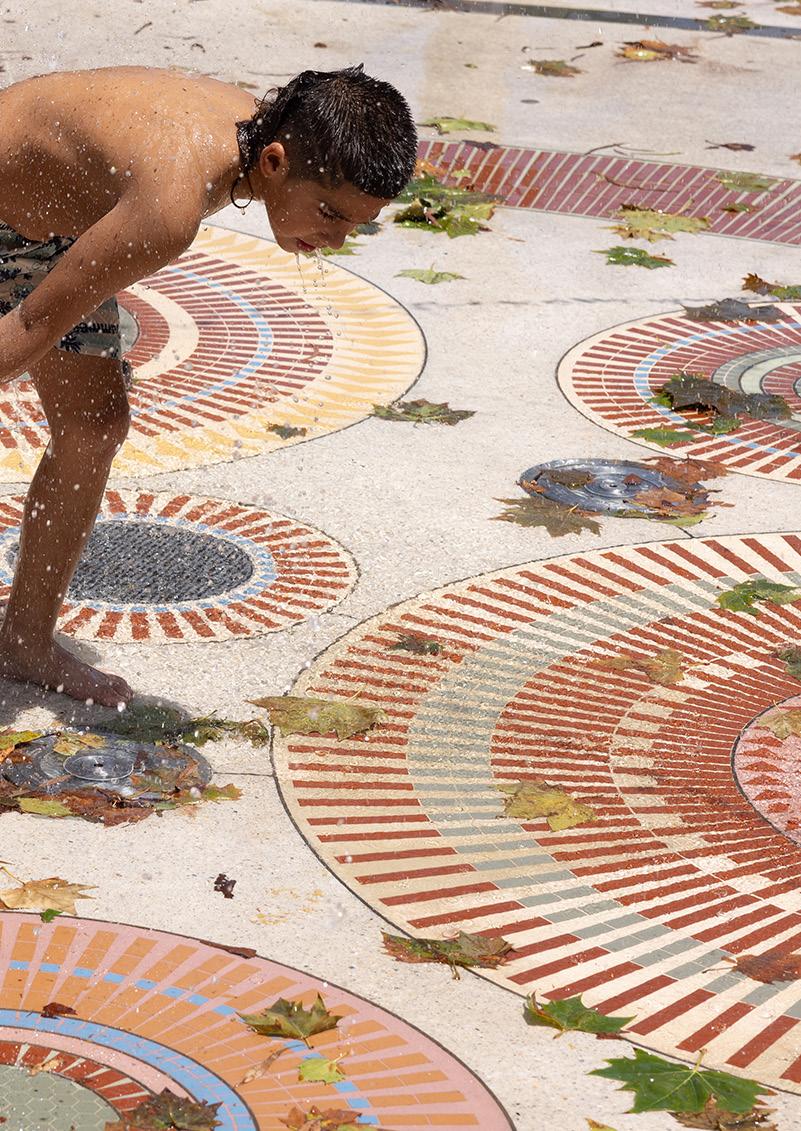
“Working with ASPECT Studios and Regal Innovations on the Paul Keating Park project was an enriching experience. The result is a meaningful expression of multiculturalism that gives kids a place they can recognise as their own. I found the collaborative process to be both warm and engaging, and I couldn’t be happier with the result.”
- Dharug Artist Adam Laws
Ian Stromborg Play Space at Paul Keating Park Sydney, Australia
Design Services
Designing with Country can take many forms according to the project brief. It is shaped based on the specific co-design processes and needs of the client and community. Examples of the types of design services that we offer are provided below.
• Co-design process mapping to assist clients with developing the preferred design and engagement process
• Site assessment and opportunities identification lending our expertise in analysis to ensure best design outcomes
• Co-design workshops tailored to client and community needs and of varying scales. The focus of the workshop process is to capture design opportunities and find common ground for how they can be revealed through design
• Master Planning, providing strategic plans that will guide project delivery for years to come
• Concept design preparing plans, three dimensional sketches or models to represent co-design outcomes
• Detailed design and delivery providing documentation to enable built outcomes.
• Post project completion review and reflection providing opportunities for communities to share stories about outcomes
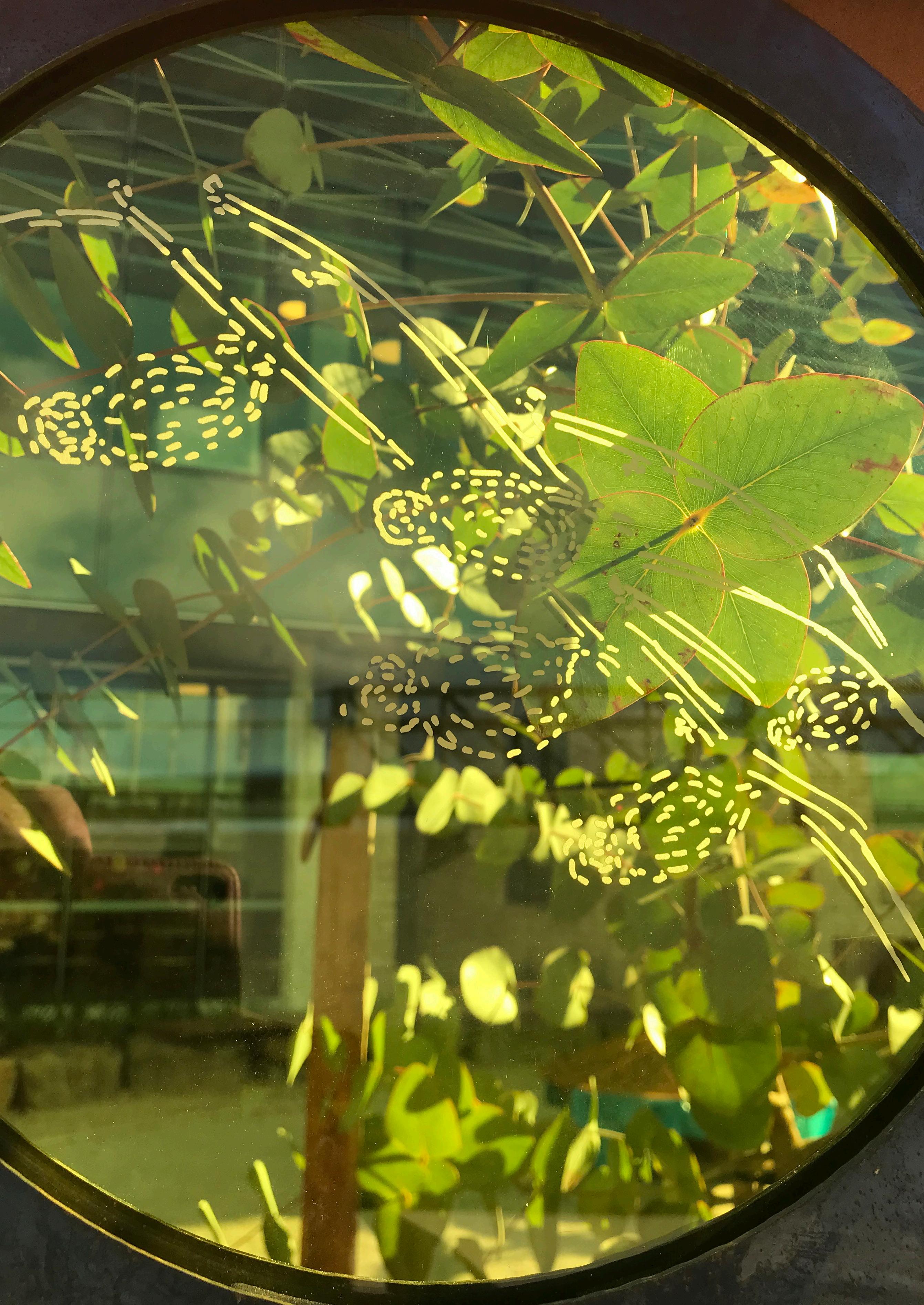
Riawunna Garden, UTAS Inveresk Tasmania, Australia
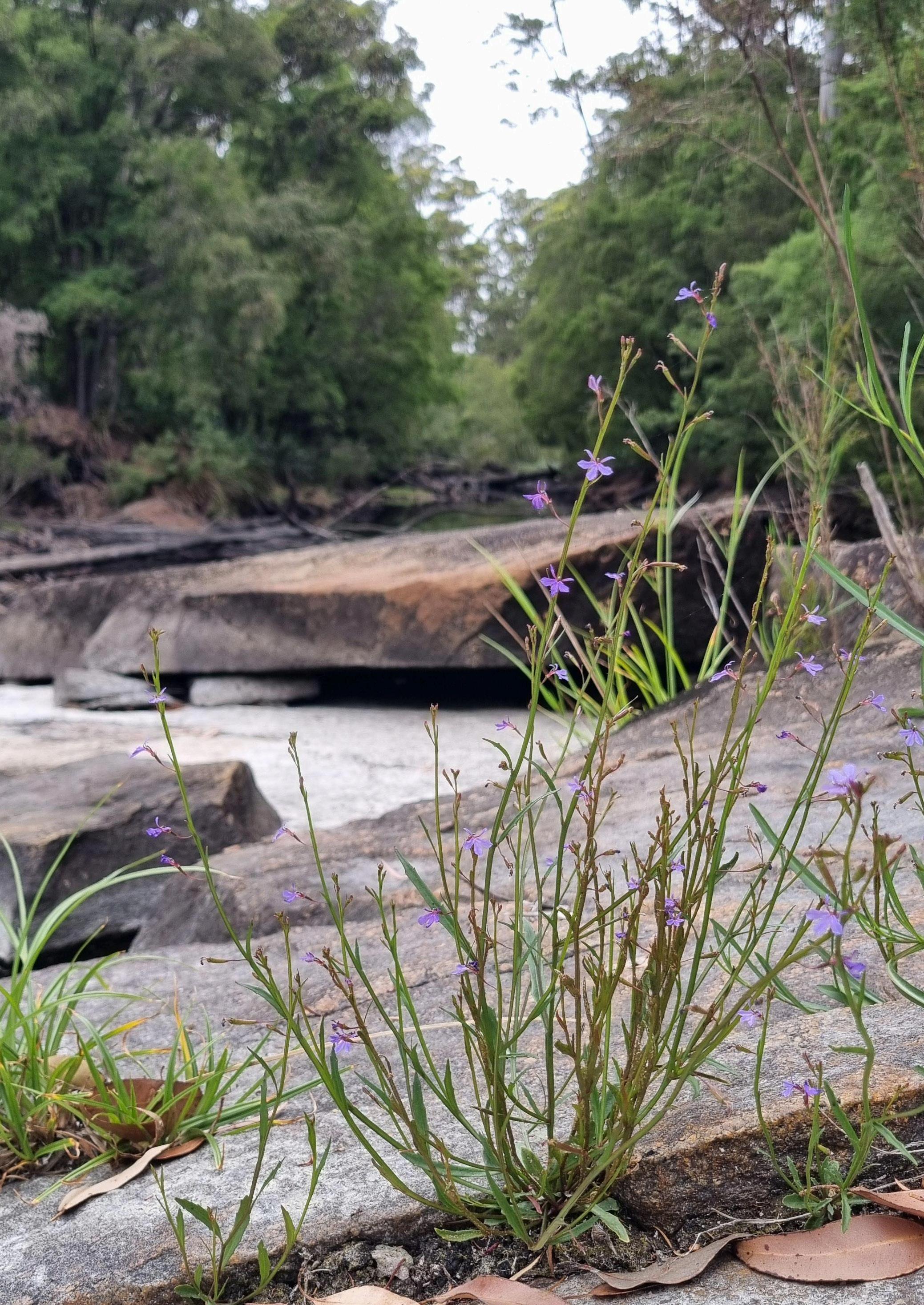
Case Studies
The following pages highlight key projects delivered by our studios across Australia. The projects have been selected to highlight the benefits of our designing with Country approach.
Yagara and Turrbal Country
Brisbane Studio
• Dixon Reserve – Pimpama
• Aboriginal and Torres Strait Islander Art Gallery of Australia Project
Gadigal Country
Sydney Studio
• Central Park, Bradfield
• Ian Stromborg Play Space at Paul Keating Park
Wurundjeri Woi-Wurrung Country
Melbourne Studio
• Riawunna Garden, UTAS Inveresk Bendigo Law Courts
Whadjuk Noongar Country
Perth Studio
• Murujuga Tourism Precinct
• Perth Concert Hall Redevelopment
Kaurna Country
Adelaide Studio
• Ovingham Level Crossing Removal Project
• Glenthorne National Park / Ityamaiitpinna Yarta Master Plan Report
Map Credit: Australian Institute of Aboriginal and Torres Strait Islander Studies 1996. Created by David R
Map of ASPECT Studios Locations
Yagara and Turrbal Country
Brisbane Studio
We are fortunate to be located on Yagara and Turrbal Country.
Our studio approaches each landscape response with the intent to build on an understanding of site ecology, geology, and culture. With our understand of the natural history of a site, we can begin to understand how ecologies may have influenced many of the land uses of the Traditional Owners; whether as an area of ecological abundance for hunting and gathering, for traversing and travelling or for gathering and celebration.
One of the many ways we consider biodiversity is through the proposed planting palette, which also aims to reflect the continual evolution of the site as development progresses and microclimates change and evolve. We consider local tracks through the landscape and aim to reflect an exploration of Country, encouraging integration with the local neighbourhood and building on modern day culture with traditional understandings of the land.
Dixon Reserve – Pimpama
The
reimagined Dixon Reserve will harmoniously weave the needs of the natural environment and waterways with those of the Pimpama community.
A key strand of the design is to create a legacy of local stewardship, rooted in community engagement across generations, to safeguard the Reserve’s regeneration. The design integrates and balances recreation value, immersive play and educational experiences. Once complete, Dixon Reserve will be a holistic sanctuary where ecological rejuvenation occurs in tandem with the flourishing of community well-being.
Community engagement involved three workshops lead by ASPECT Studios with Uncle David, Uncle Ted and Shaun Davis from Danggan Balun Working Group representatives help guide Dixon Reserve’s cultural significance, ensuring relevance and sensitivity. Naming, wayfinding, spatial planning, planting, materials, play areas, water features, and opportunities for artworks and educational elements were all reviewed and discussed.
Country: Yugambeh
Traditional custodians/knowledge holders/ artists/community name/s: Danggan Balun
Indigenous Corporation: Danggan Balun
Working Group DBWG
Language Group: Yugambeh
Year: 2024 - ongoing
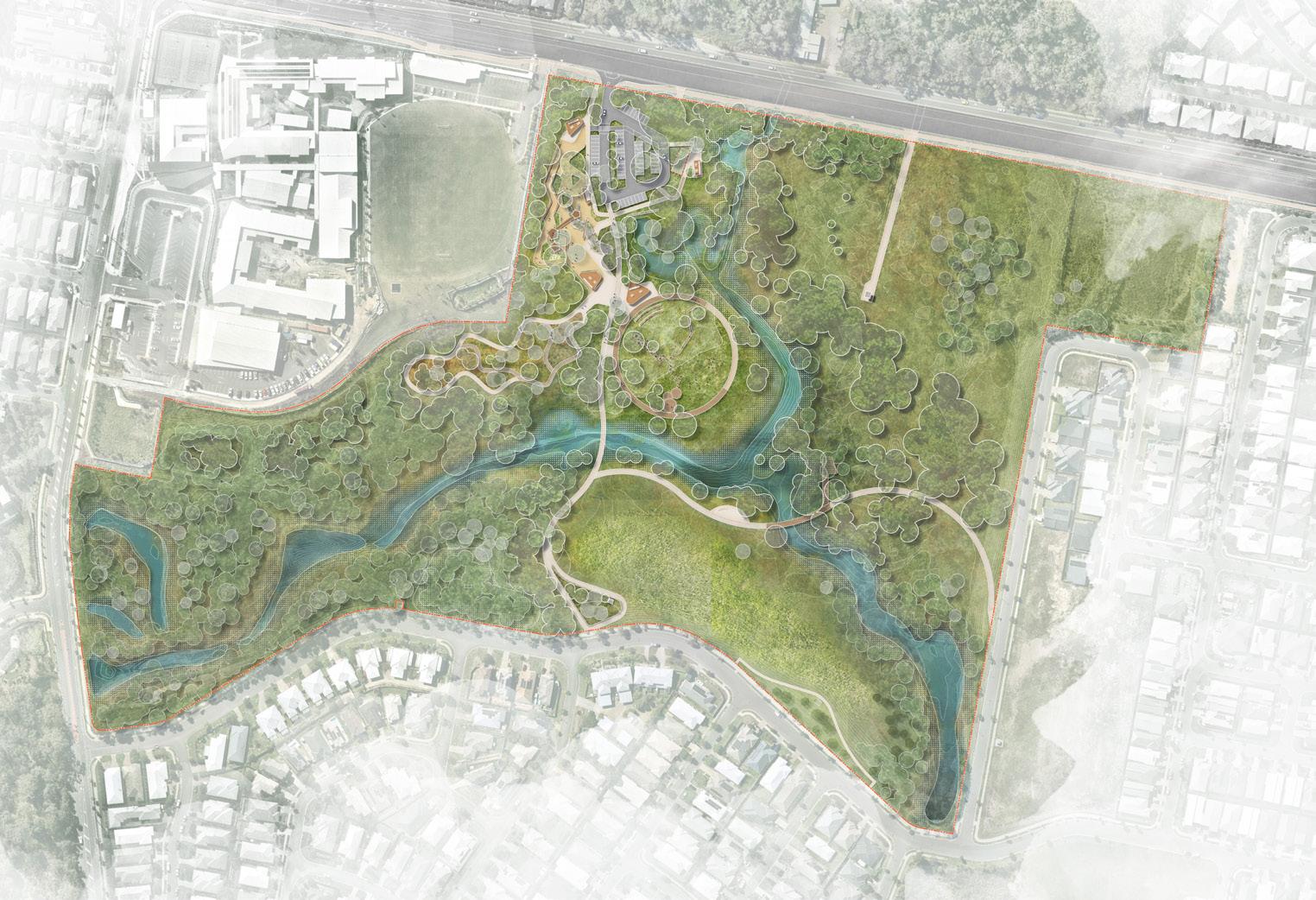
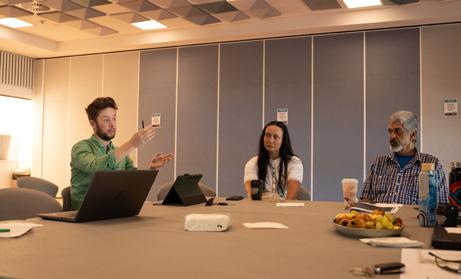

Aboriginal and Torres Strait Islander Art Gallery of Australia Project
The Aboriginal and Torres Strait Islander Art Gallery of Australia (ATSIAGA) is an NT Government project to celebrate and showcase First Nations art and culture.
Located in Mparntwe (Alice Springs), the gallery will serve as a cultural and architectural landmark at the heart of the continent.
Community engagement involved workshops with LAAC representatives to guide the gallery’s landscape design, ensuring cultural relevance and sensitivity. Spatial planning, planting, materials, play areas, water features, and opportunities for artworks and educational elements were all reviewed and discussed.
Our key learnings from this project were centred on gaining an understanding sensitivities of the site, learning about local culture and the key sensitivities of the site within Alice Springs.
Country: Arrernte
Indigenous corporation: Lhere Artepe
Aboriginal Corporation (LAAC)
Language group: Arrernte
Year: Concept only 2024
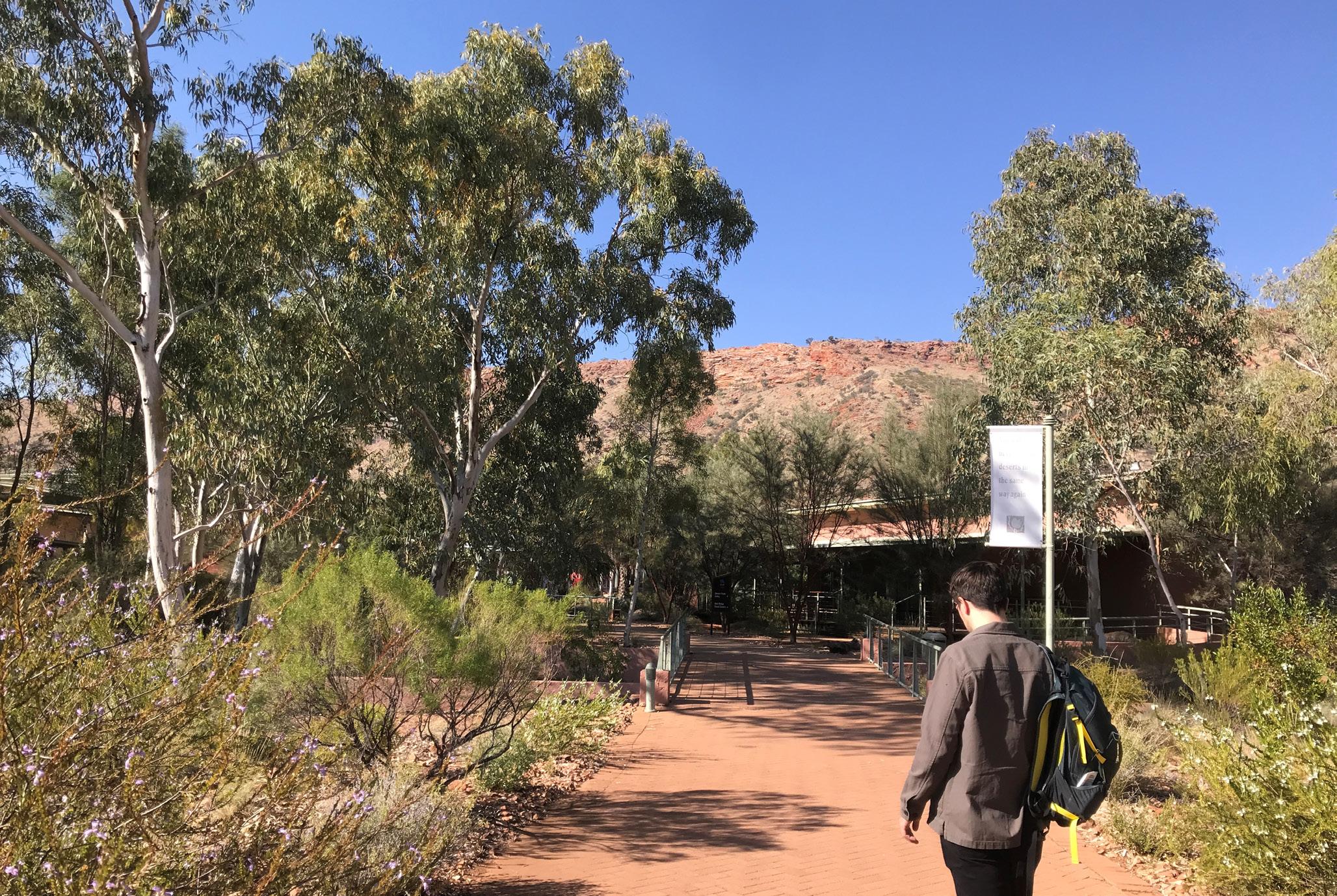
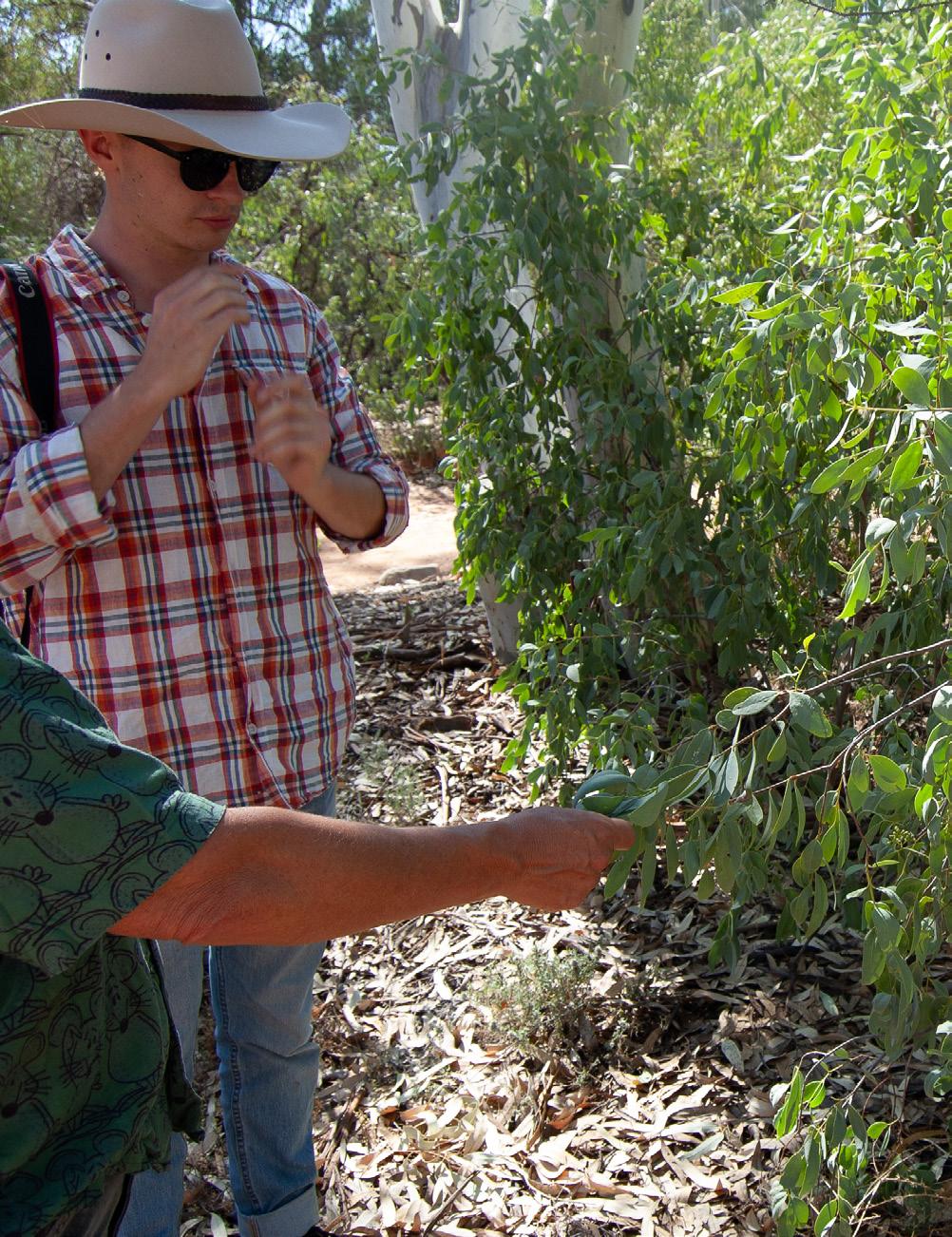
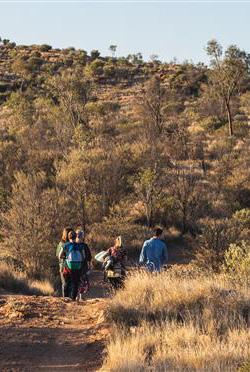
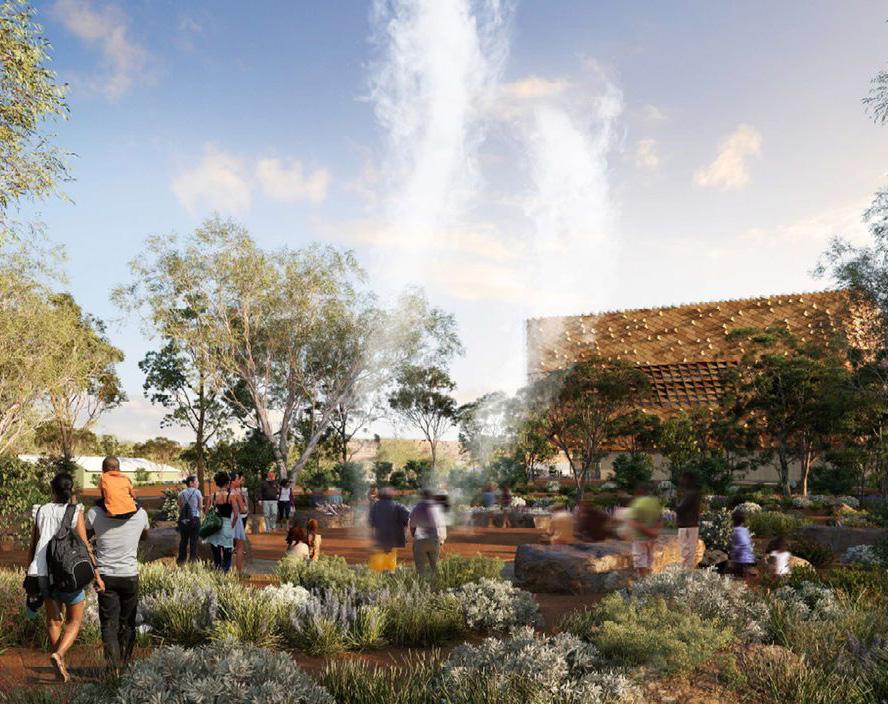
Gadigal Country
Sydney Studio
We are honoured and privileged to work in an age-old, deep-time landscape here in Redfern on Gadigal Country. We also acknowledge and are energised to action by the role that this area has had to play as a key site of urban Indigenous culture, activism and resilience. We acknowledge the value that building strong relationships through appropriate and genuine collaborative engagement processes brings to our understanding of Indigenous people and cultures, and ultimately to the various stages of our projects. We ensure our engagements and ways of working are welcoming, respectful and inclusive and follow the GANSW Connecting with Country Framework.
Central Park, Bradfield
Central Park at the heart of the new Western Sydney Bradfield City Centre has been Countryled from its inception.
Creative First Nations collaborators were embedded within our team and they have driven considerations on what Central Park could provide for the Dharug nation seven generations from now and established a set of cultural values against which the project has constantly been assessed.
At the heart of the park the Interwoven Heart celebrates ongoing cultural and creative practice through the design, uses and integrated learning and education opportunities was proposed in the competition to be developed through a co-creation process.
The co-creation process has involved over a dozen workshops with weaving practices and other creative processes by the First Nations team outside of the workshops. Early in the process the Dharug Weaving team established of a series of intentions for the outcomes they would like to see embedded within the project. These have remained the touchstones on which the design and decision making has been evaluated as the design has evolved from concept through to technical documentation.
All First Nations collaborators have been engaged through ASPECT Studios for the project, and we have been responsible for managing the full process and responsible for the design and technical resolution. Jayne Christian has acted as a key advisor and was consulted around all issues and the planning of the workshops.

Country: Dharug Nation – Cabrogal clan
Connecting with Country Framework / Competition Client Side Advisors: Cassandra Rowe (Cabrogal), Mikaela Jade (Cabrogal), Glenda Chalker (Dharawal), Thelmerie Rudd (Dharug - Boorooberongal clan), Brendan Thomas (Dharug - Boorooberongal clan), Cindy Laws (Dharug & Darkinjung - Boorooberongal clan), Erin Wilkins (Dharug), Julie Jones Webb (Sovereign Dharug Fresh and Saltwater Knowledge Keeper), Justine Coplin (Dharug), Shane Laws (Dharug & Darkinjung –Boorooberongal clan), Debbie Bradley (Dharug).
Creative Collaborators : Emily McDaniel (Kalari Clan of the Wiradjuri Nation) and Jayne Christian (Baramadagal Clan of the Dharug Nation)
Weavers: Jayne and Julie Christian (Baramadagal Clan of the Dharug Nation), Tara Lloyd (Baramadagal Clan of the Dharug Nation), Karen Maber (Cabrogal Clan of the Dharug Nation), Deanne Cooper (Baramadagal Clan of the Dharug Nation), Emma Tarrant, Clive and Julie Freeman (Yuin and Wiradjuri)
Dharug Artists collaborating with Janet Laurence: Jamie Eastwood, Kylie Colemane, Leanne Tobin
Language group: Dharug
Year: 2023 - in progress
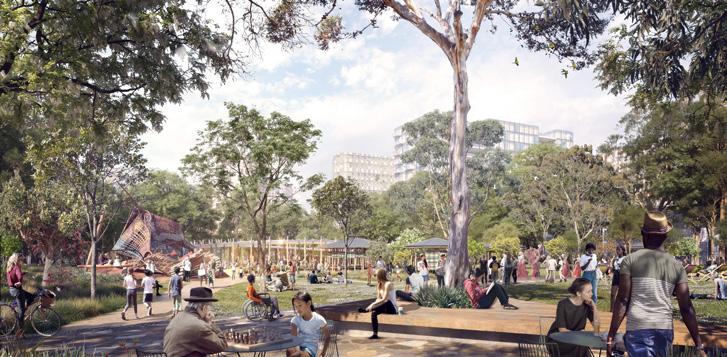
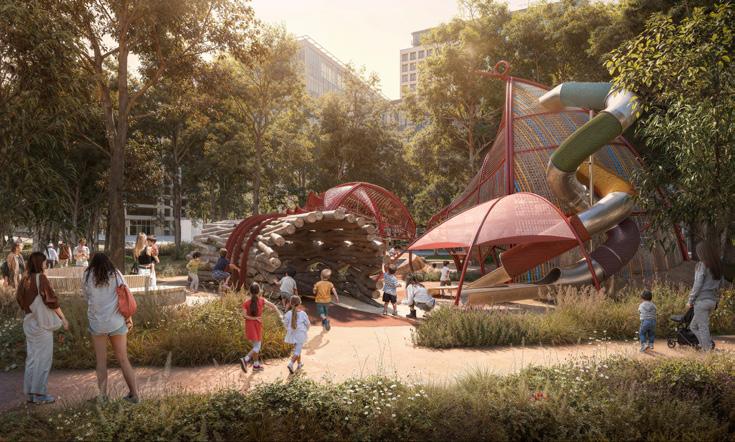
Ian Stromborg Play Space at Paul Keating Park
ASPECT Studios were engaged via the head contractor, Regal Innovations, to design the Playground for Bankstown Council.
Building on the design opportunities and strategies identified by Dinjama in earlier stages, we sought to respect the existing trees, embrace nature and water play and celebrate timber. Respecting Country our work improved the condition of the soil and water penetration with understorey planting (installed by First Nations landscaper Wildflower), providing habitat that supports native fauna. An integral member of the team, Dharug Artist Adam Laws’ work went deeper and revealed the totems of the site through a series of integrated artworks.
In Adam’s words, “The artwork carries forwards the tradition of our ancestral rock carving sites where we gather to honour and acknowledge our connections to the ancient landscapes.’
Country: Dharug
Traditional custodians: The Darug (Darag, Dharug, Daruk, Dharuk) People Rain Line Arts (First Nations Artist), Wildflower (First Nations landscaping services)
Language group: Darug or Dharug
Year: 2024
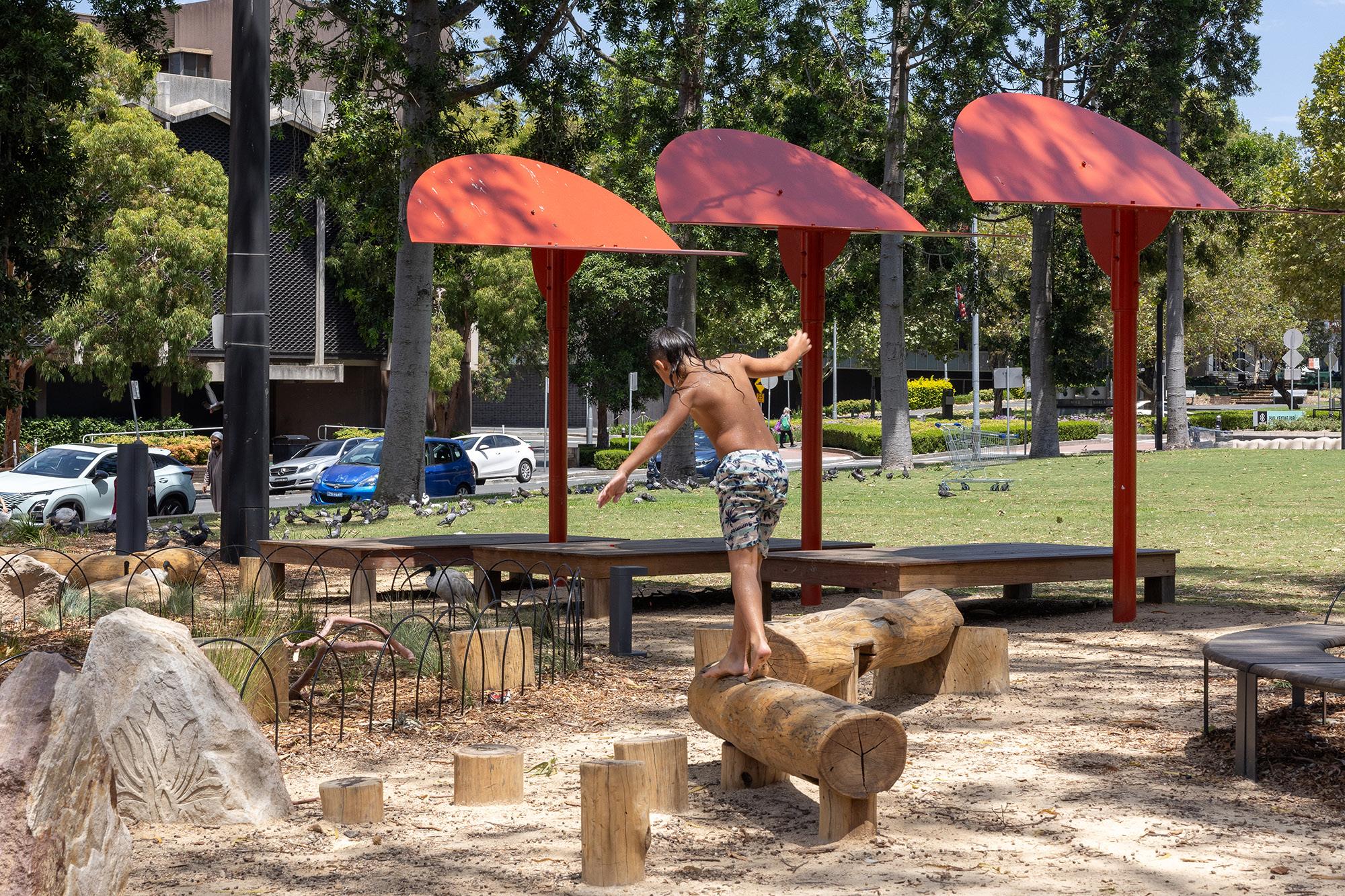
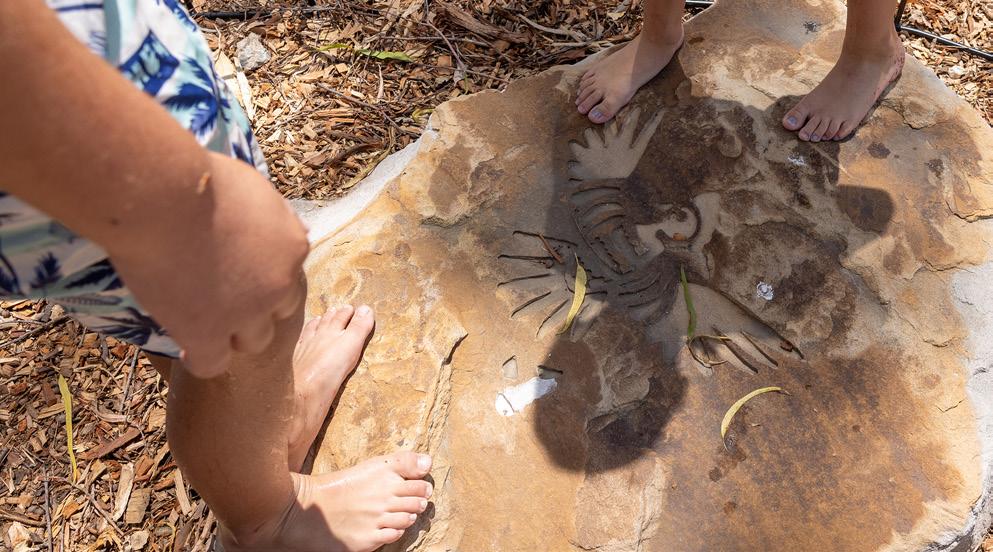
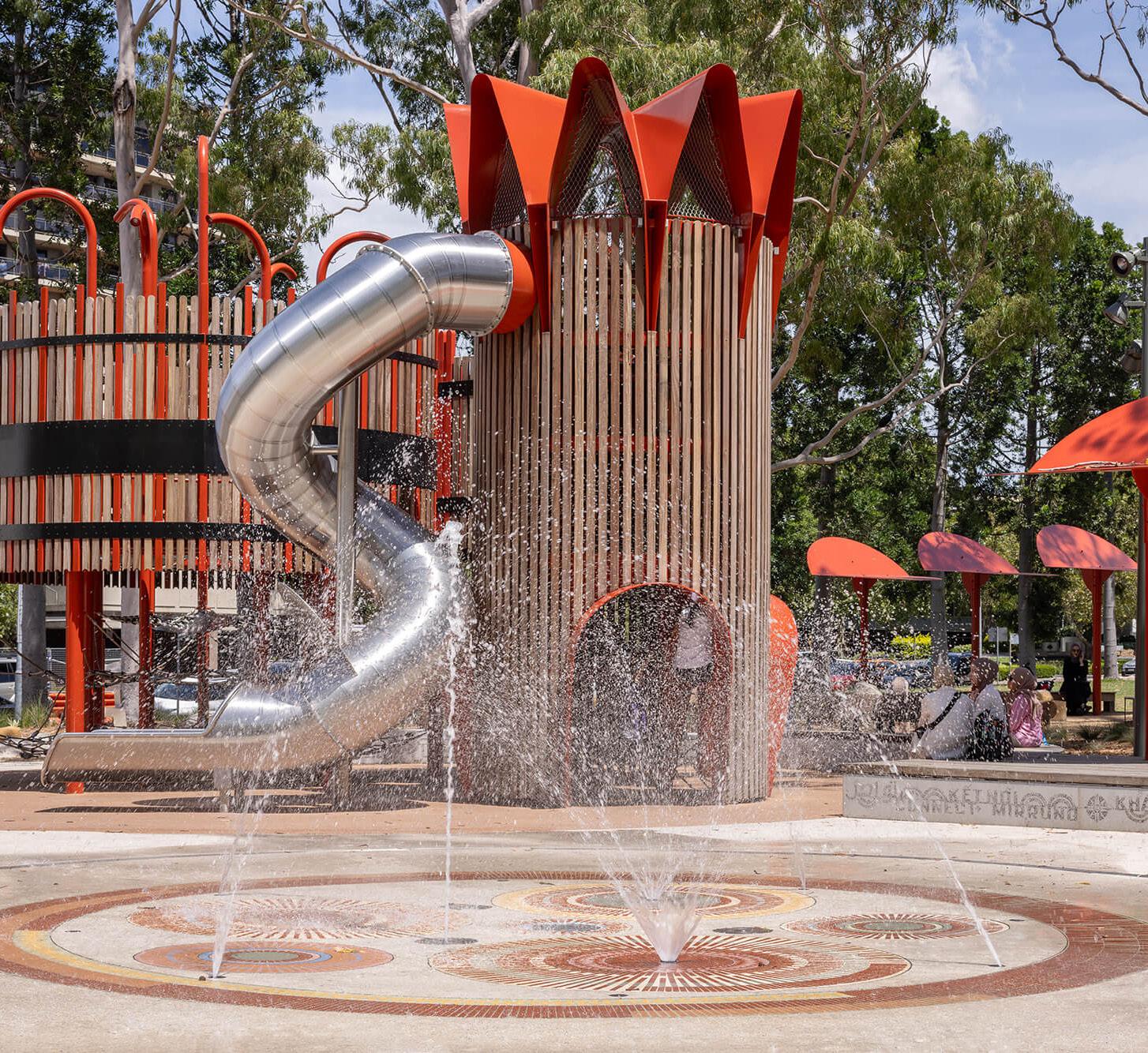
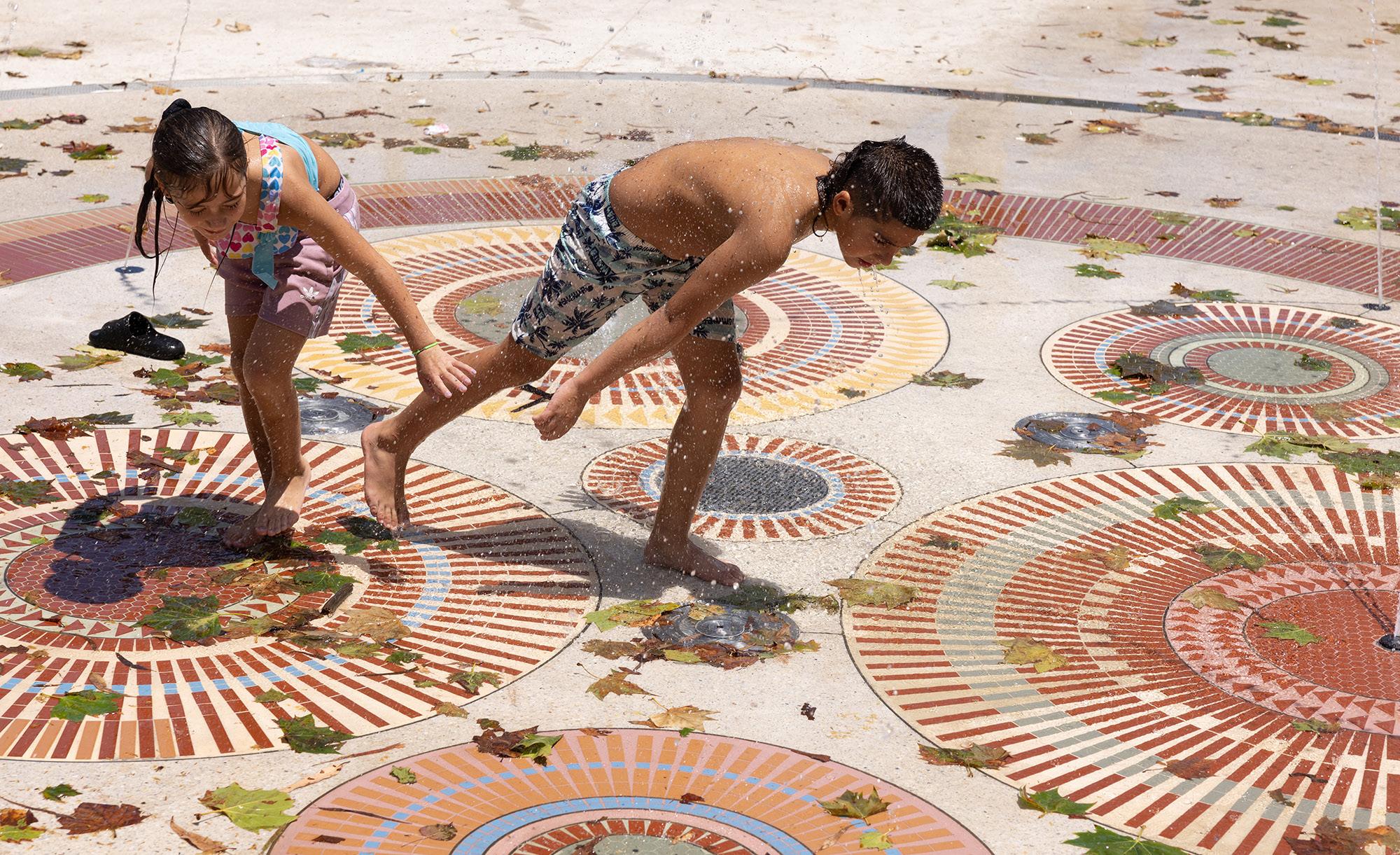
Whadjuk Noongar Country
Perth Studio
Our Perth Studio is located along the banks of the Derbal Yerrigan, on the ancestral lands of the Whadjuk Noongar people. Here, we stand with deep respect for the living culture, wisdom, and traditions that continue to shape this place. When working on Whadjuk Noongar Boodjar (Country), we honour the rhythm of the six Noongar seasons—Birak, Bunuru, Djeran, Makuru, Djilba, and Kambarang— each embodied with a profound understanding of Country and its cycles. These seasons guide us, reminding us of the intimate connection between ecologies, climate and culture.
We recognise the breadth and richness of the Noongar nation, a vast network of 14 language groups whose knowledge, stories, and DNA remain deeply embedded in the land. Beyond Noongar Country, we remain committed to asking first—acknowledging the sovereignty of First Peoples wherever we work.
Our design approach is grounded in deep listening. Through cultivating respectful and reciprocal relationships, we are guided by Traditional Custodians and Knowledge Holders. We honour and uphold the importance of cultural heritage, recognising the urgency to protect ecological / natural systems and Aboriginal knowledge.
Landscape architecture, to us, is a powerful medium for storytelling. It holds space for truth-telling, for acknowledging both historical and contemporary events as well as celebrating ancient living cultures that continue to Care for Country. In every project, we strive to walk gently, listen carefully, and design with purpose—towards a future grounded in a Country centred approach.
Perth Concert Hall Redevelopment
Redevelopment of the Perth Concert Hall to strengthen its position as a civic space for gathering and through Storylines (songlines), a place to celebrate the arts, honouring the history, heritage and the culture of this place.
We came together through workshops, first with a walk on Country and then a cultural learning workshop through deep listening. Workshops then continued that together developed cultural heritage opportunities, Connection to Country design themes and all year flowering indigenous planting palettes. This enabled a considered landscape approach to evolve.
Cultural knowledge guided the design and began to reconcile the Concert Hall back to Country, to water, and to music lines. The value of local plants was shared by Elder Vivienne Hansen, and will be on display to enable learnings and visibility of Country.
Country: Whadjuk Noongar
Traditional Custodians: Elders Vivienne and Mort Hansen, with Cultural Consultants Barbara Bynder and Farley Garlett.
Language Group: Noongar
Year: Built / In-Progress: In progress
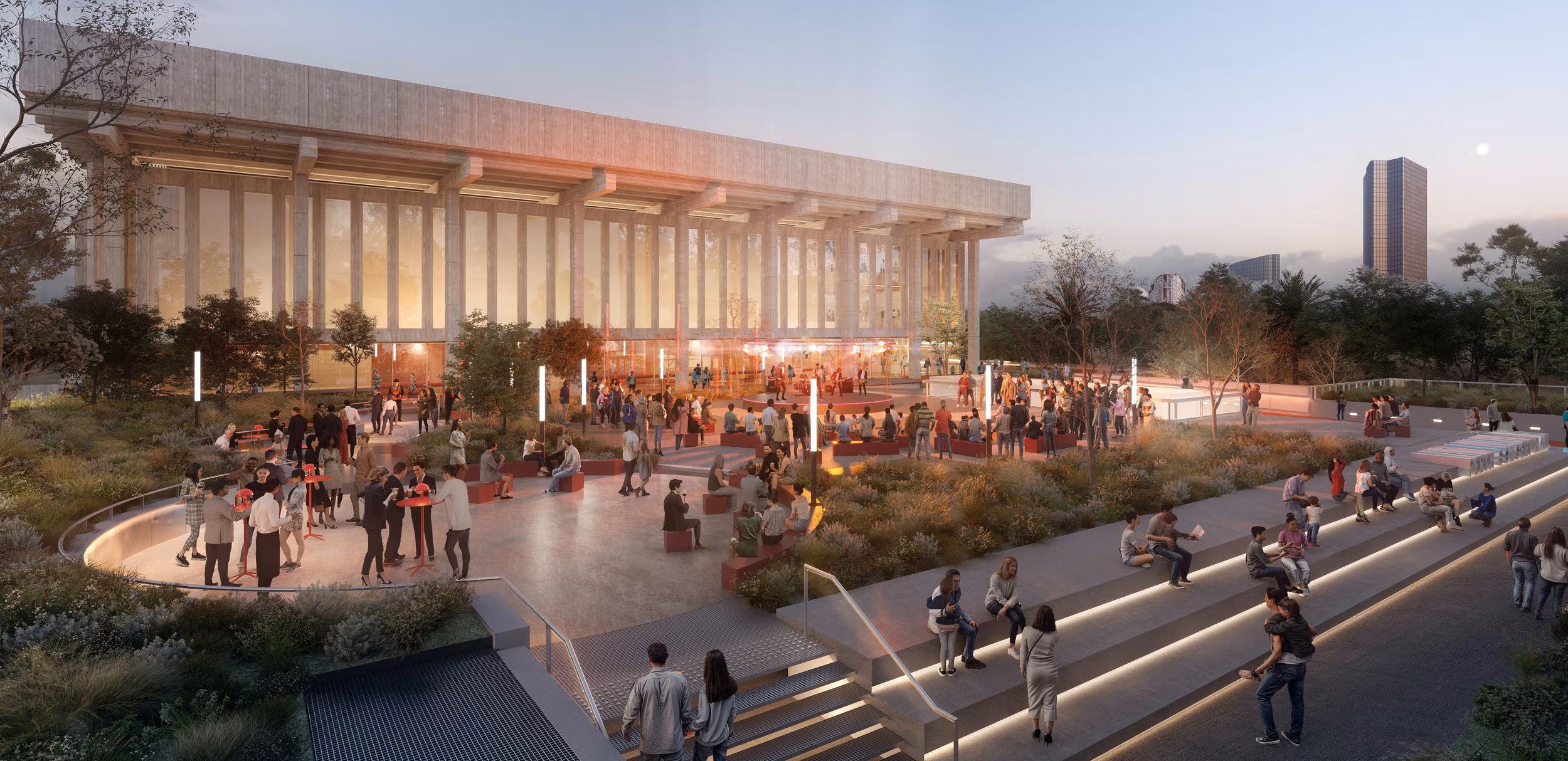
Murujuga Tourism Precinct
The Murujuga National Park is home to one of the largest, densest and most diverse collections of rock art in the world. This park in north west WA is currently nominated for UNESCO World Heritage listing.
An Indigenous tourism precinct set within the Murujuga National Park that will include the Murujuga Living Knowledge Centre, eco- accommodation and day use facilities. The Murujuga Aboriginal Corporation (MAC) is the client and they represent Ngurra-ra Ngarli, custodians of Murujuga. The design team travelled multiple times over the course of the project to walk on Country alongside members of the Circle of Elders and the MAC team. During these visits, they participated in multi-day workshops to listen to and gain insights into the Elders’ vision for the project.
Country: The Ngarluma, Yindjibarndi, Yaburara, Mardudhunera and Wong-Goo-Tt-Oo groups, collectively Ngurra-ra Ngarli, are today recognised as the Aboriginal custodians of Murujuga. Ngurra-ra Ngarli acknowledge that Murujuga was once the land of the Yaburara people who lived in the area for at least 50,000 years
Custodial Groups of Murujuga: Custodial Groups of Murujuga include the Ngarluma, Mardudhunera, Yaburara, Yindjibarndi, and Wong-Goo-Tt-Oo peoples – collectively known as Ngurra-ra Ngarli
Indigenous Corporation: Murujuga Aboriginal Corporation
Year: In Progress

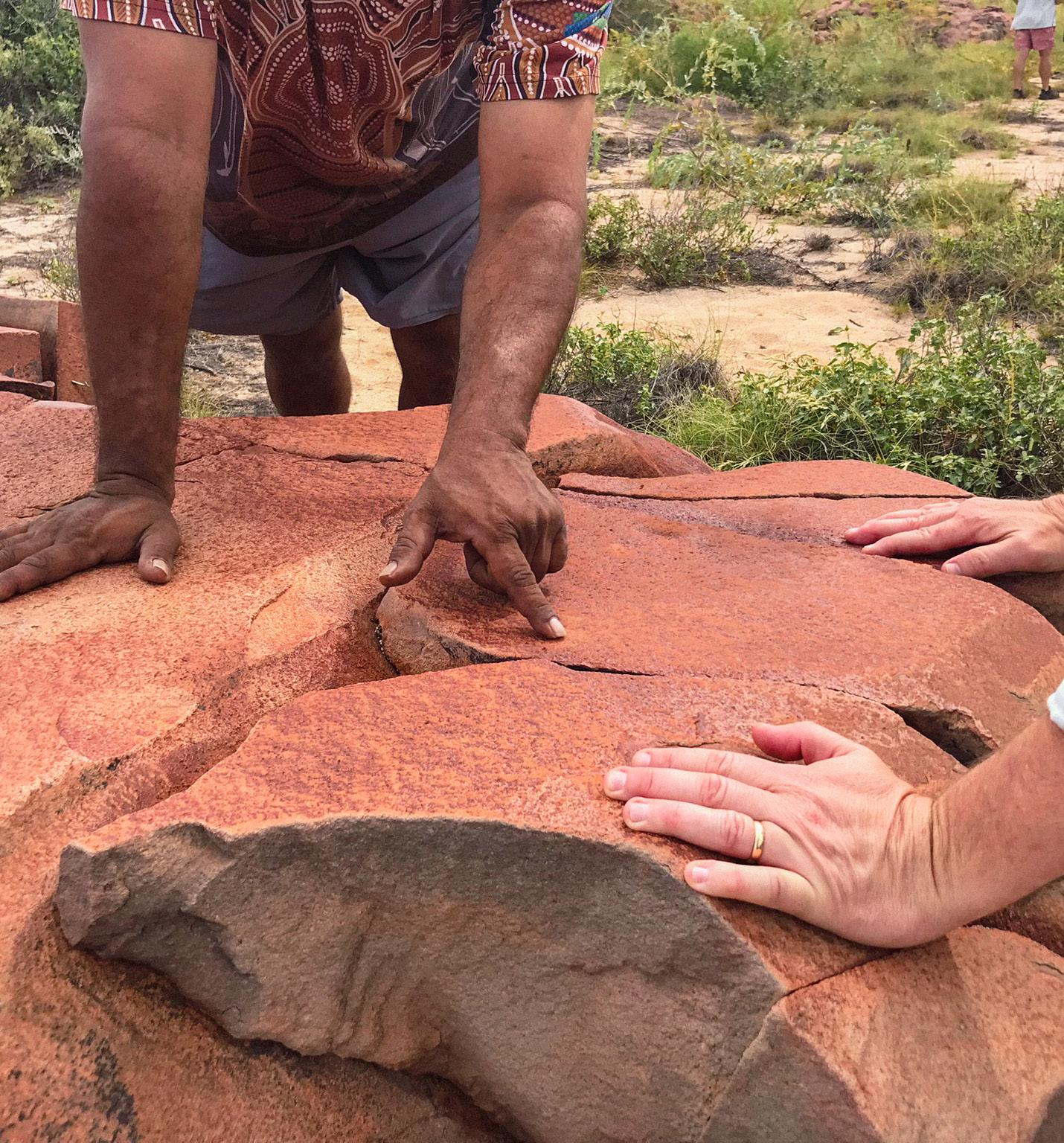
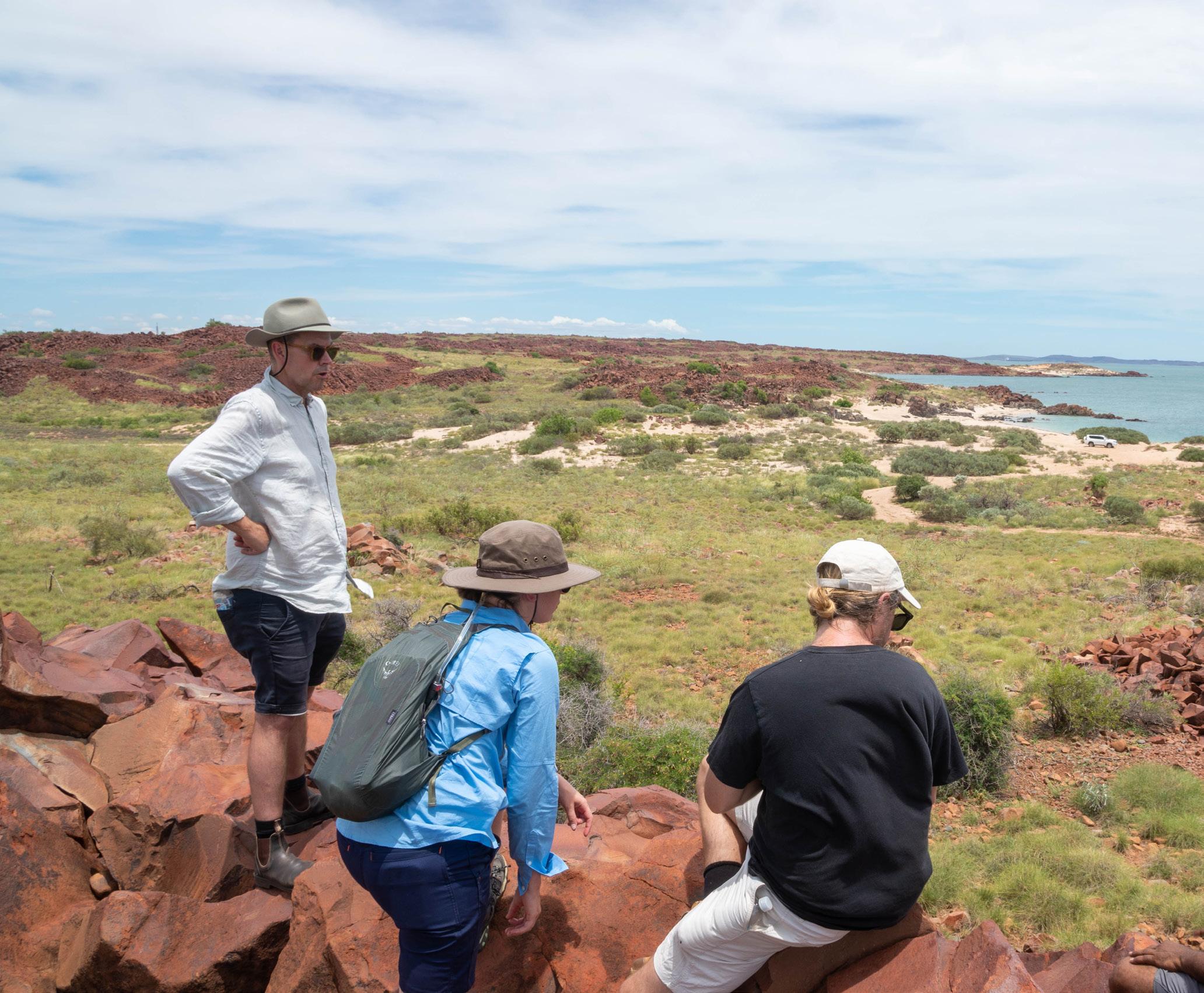
Kaurna Country
Adelaide Studio
Our Adelaide Studio is located in the heart of the city on the traditional lands of the Kaurna people. We are proud to be located in a city rich with natural assets, with the Karrawira Parri (River Torrens) on our doorstep.
We have built a practice of working with Traditional Custodians from across the Adelaide Plains and throughout South Australia. Our relationships run deep and have given us a genuine respect for cultural practices and reconciliation.
Truth telling is an important component of this and we walk with our fellow First Nations Peoples on a journey of knowledge sharing that aims for reciprocity, self-determination and empowerment.
Through the work we do, we are an integral part of shaping the city and through ongoing dialogue with our First Nations communities, enrich our connectedness to nature within a thriving place where people live, work and play.
Ovingham Level Crossing Removal Project
The Ovingham Grade Separation project, located on Kaurna Country in inner metropolitan Adelaide, sets a benchmark for the integration of Indigenous culture and expression in a major SA Government transport infrastructure project.
Key narratives explored through the project include the story of Yurakawe and Tulya Wodli, the great celestial plain and the profound connection between earth and sky.
A detailed co-design process established in the early stages of the program, gave opportunities for stories to be shared and narratives to evolve throughout the design development of the project. These narratives are revealed through a range of site specific public art and integrated design interventions, enriching the space and providing a high quality new park for the wider community.

Country: Kaurna
Traditional Custodians: Kaurna Meyunna
Indigenous Corporation: Kaurna Yerta
Aboriginal Corporation (KYAC)
Creative Collaborators: Aboriginal Urban Design, COX Architecture
Year: 2023
Recognition of collaborative design/awards: AILA Landscape Architecture Award for Infrastructure 2024
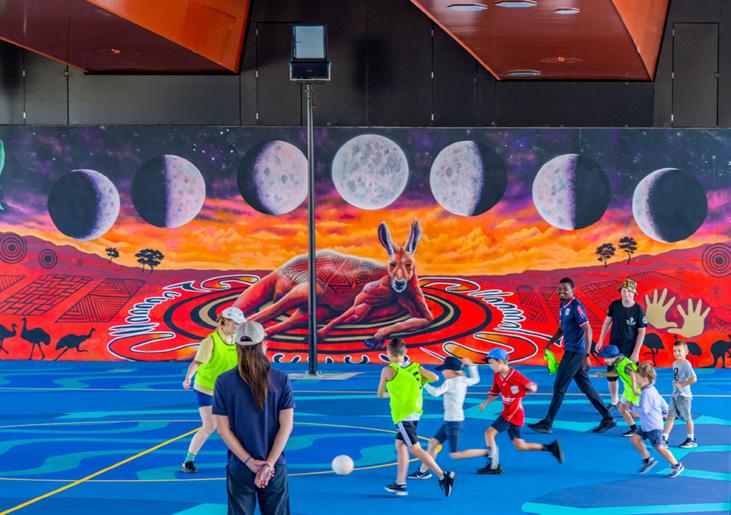
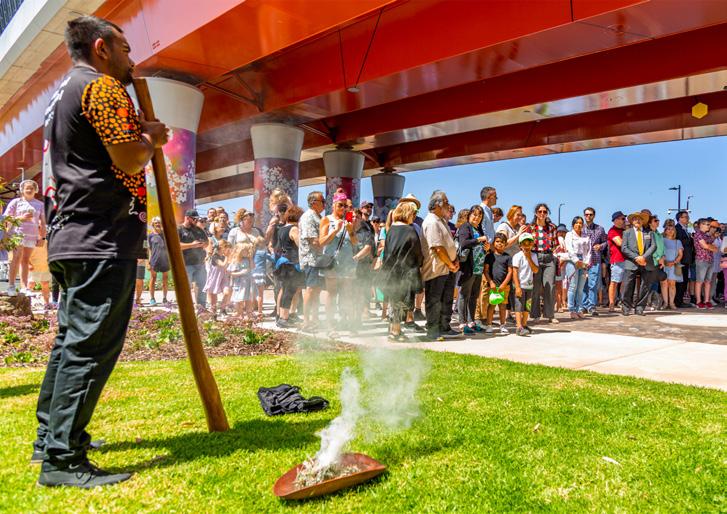
Glenthorne National Park / Ityamaiitpinna Yarta Master Plan Report
Proclamation of the Glenthorne National Park / Ityamaiitpinna Yarta, located on unceded Kaurna Meyunna Country, presented a unique opportunity to establish a connected network of more than 1,500 hectares of open space in the southern suburbs of Adelaide.
Acknowledgement of Kaurna’s cultural connection to Country was a key pillar embedded in the Master Plan which recognised the impacts of colonisation, celebrated Kaurna’s living culture and identified opportunities for self-determination. The property’s rich layers of history are explored through the formation of heritage precincts and interpretation nodes peppered throughout the park and integrated with visitor facilities such as the nature playspace, walking trails, lookouts and picnic areas.
A proposed Kaurna ceremonial space would provide opportunities for immersive cultural performance, ceremony and cultural practices, and a proposed productive landscape offers economic opportunity for community. Low-impact small-group camping facilities will also provide further opportunities for cultural healing. Importantly, the Master Plan proposes a community governance model for the National Park to ensure continued community and local government participation, engagement and decision-making.
Country: Kaurna Nation
Traditional Custodians: Kaurna
Co-design Collaborators: Glenthorne
Partnership URPS
Year: Master Plan completed 2020
Award: AILA SA Award of Excellence for Landscape Management 2020
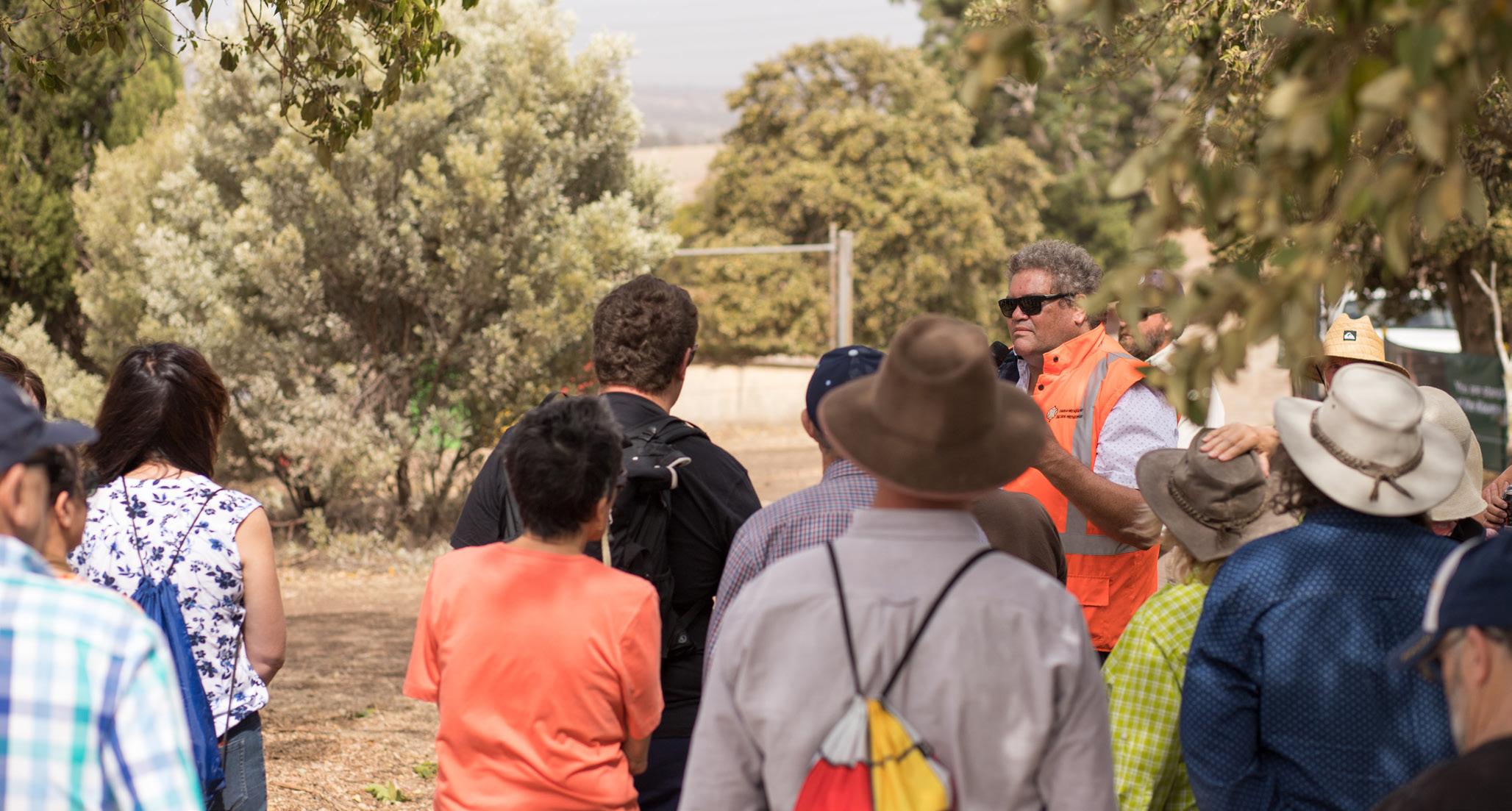
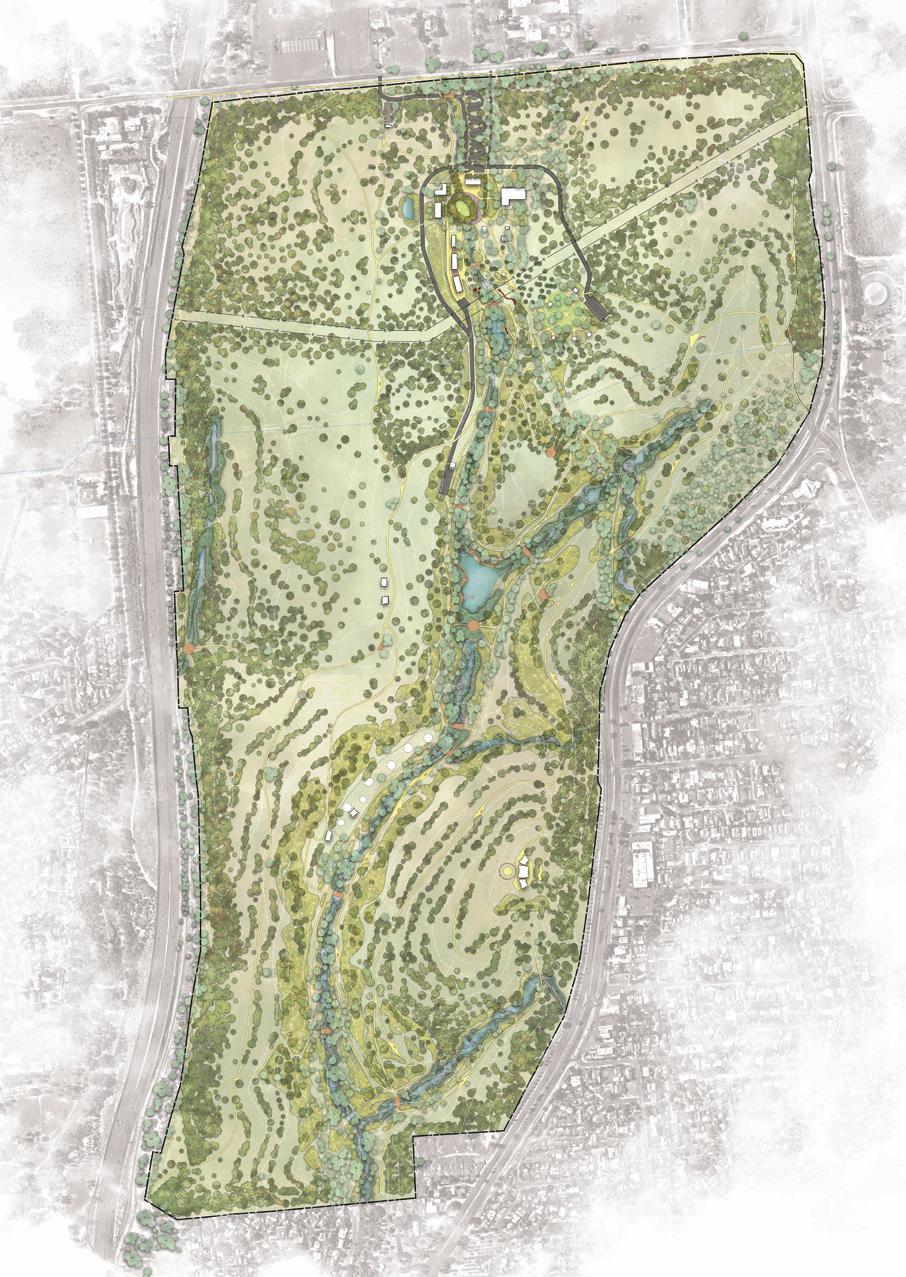

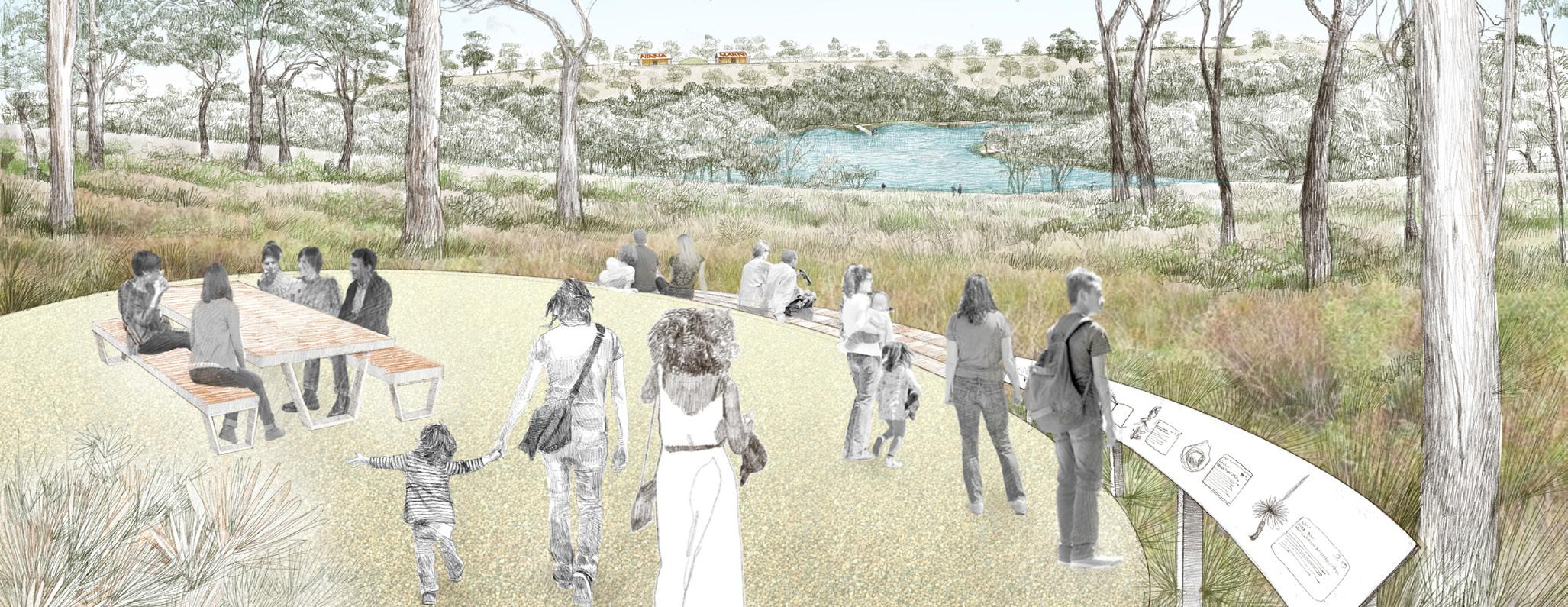
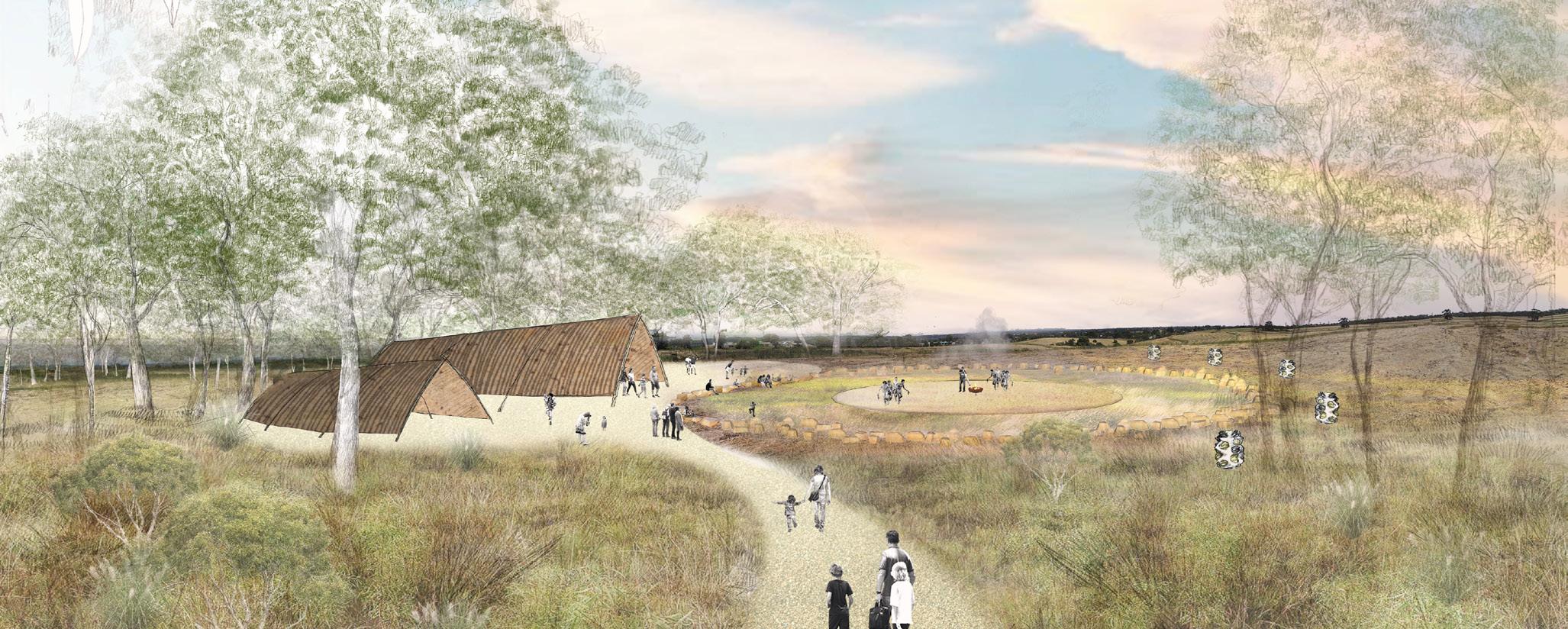
Wurundjeri Woi-Wurrung Country
Melbourne Studio
The Melbourne Studio acknowledges the Wurundjeri Woi-Wurrung peoples as the Traditional Custodians of the land on which our studio is located.
We are committed to a respectful ‘caring for Country’ approach. This involves developing a deeper understanding of the values and rights of Country through building strong and trusting relationships with Aboriginal and Torres Strait Islander peoples across the lands in which we live and work.
ASPECT Studios practices a welcoming, respectful and inclusive approach with Traditional Custodians, understanding the responsibility they have for Country. We collaborate with local communities because we recognise the importance of the connection they have with Country, their inherent knowledge and wisdom that has been shared with them over many generations, and how this has shaped the lands and communities that surround us.
Our approach has been developed and refined over time, through ongoing strong and trusting relationships formed across a number of Victorian Aboriginal communities. The translation of this experience into an approach has resulted in a genuinely collaborative design process which provides the opportunity for embedding an Indigenous way of knowing throughout projects.
Riawunna Garden at UTAS Inveresk
An Indigenous-led and collaborative design process with Riawunna shaped a culturally rich garden design grounded by Palawa cultural values and practices.
Meeting spaces and two terraces are connected to a central ceremonial area which all reflect a strong cultural identity of place by embedding an understanding of Palawa “Knowledges of Country.”
Riawunna’s voice sat at the heart of the design and construction process, ensuring authentic cultural representation through sustained involvement—from initial conversations to artist participation on-site.
The project prioritised genuine relationship-building, enabling selfdetermination and cultural empowerment by aligning design expertise with community-led aspirations. The result is a culturally rich, meaningful space that honours Indigenous identity through true partnership and shared vision.
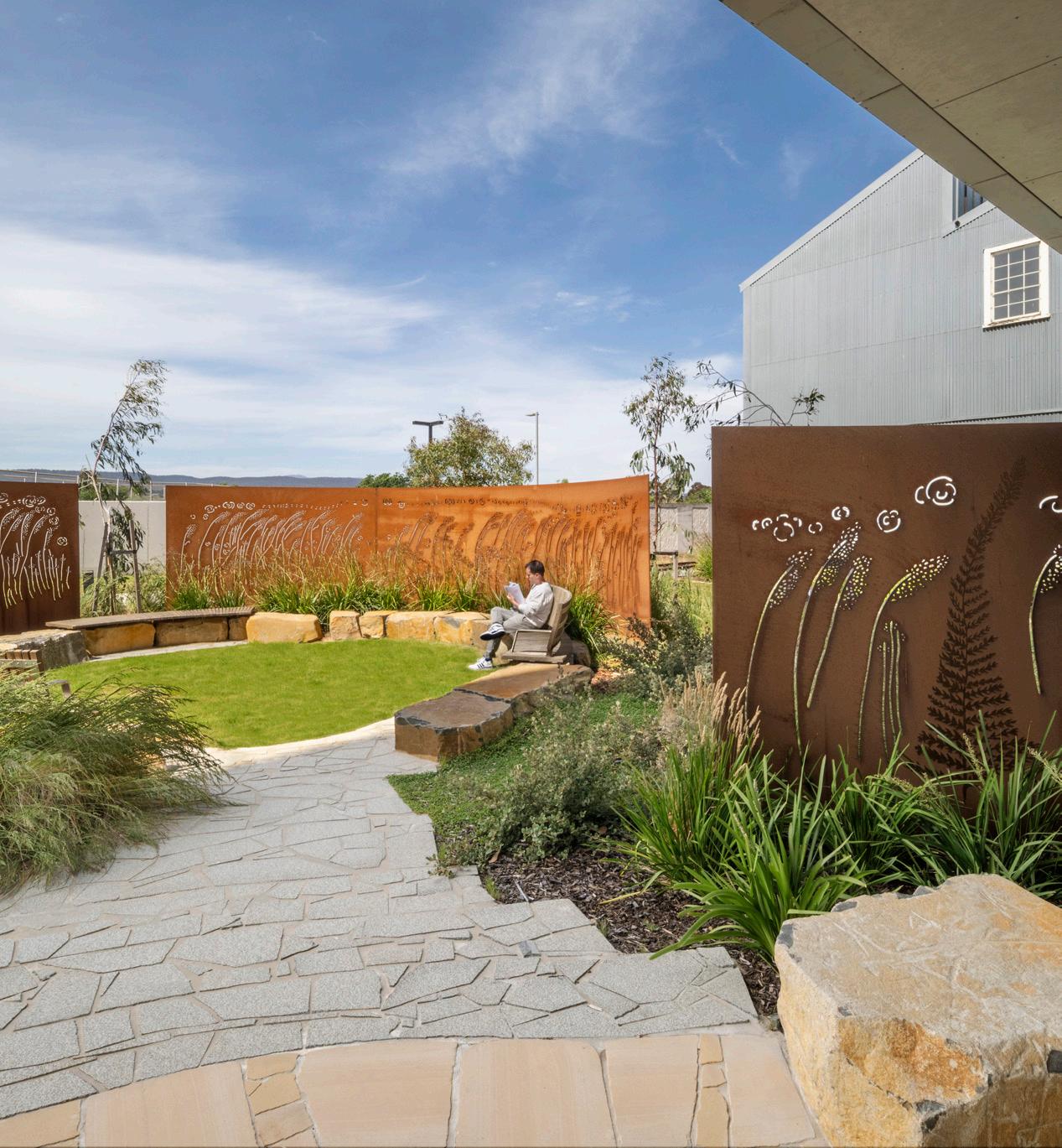
Country: Palawa
Traditional Custodians: Caroline Spotswood / David Warrener, Heads of Riawunna
Palawa Artists: Lynne Spotswood, Genie Battese
Indigenous Corporation: Riawunna Centre for Aboriginal Education, University of Tasmania
Language Group: Palawa
Year: 2024
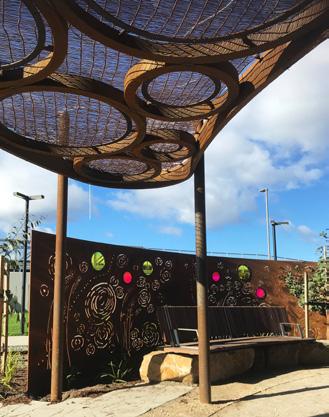
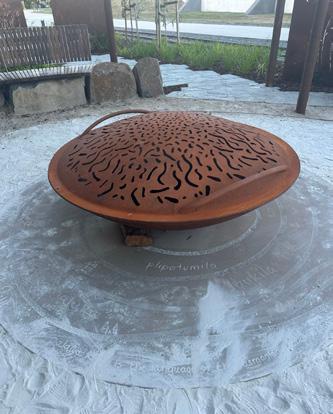

Bendigo Law Courts
The Bendigo Law Courts Forecourt landscape exemplifies best practice in co-design, showcasing contemporary cultural expression in urban spaces that provides a notable sense of cultural safety and calmness.
Enabling self-determination was emphasized through Dja Dja Wurrung being directly involved in all details of design and implementation, ensuring authentic representation of cultural values. Pairing design expertise with the artists’ narratives, the outcome is a meaningful, culturally connected space that reflects a genuine co-design and shared vision.
The project created opportunity for economic empowerment, with DJAARA guides leading tours to share cultural knowledge, highlighting the strength and depth of embedded cultural expression. Further strong relationships were built between Court Services Victoria and Dja Dja Wurrung community.
Country: Dja Dja Wurrung
Traditional Owners and First Nations Cultural Collaborators: DJAARA, Dja Dja Wurrung artist Aunty Marilyne Nicholls , Dja Dja Wurrung artist
Rebecca Phillips
Year: 2023
Recognition of collaborative design/awards: 2024 VIC AILA Landscape Awards – Landscape Architecture Award for Community Contribution | Bendigo Law Courts | 2024 National Biophilic Design Awards Winner - Community & Urban Scale Category | Bendigo Law Courts Forecourt
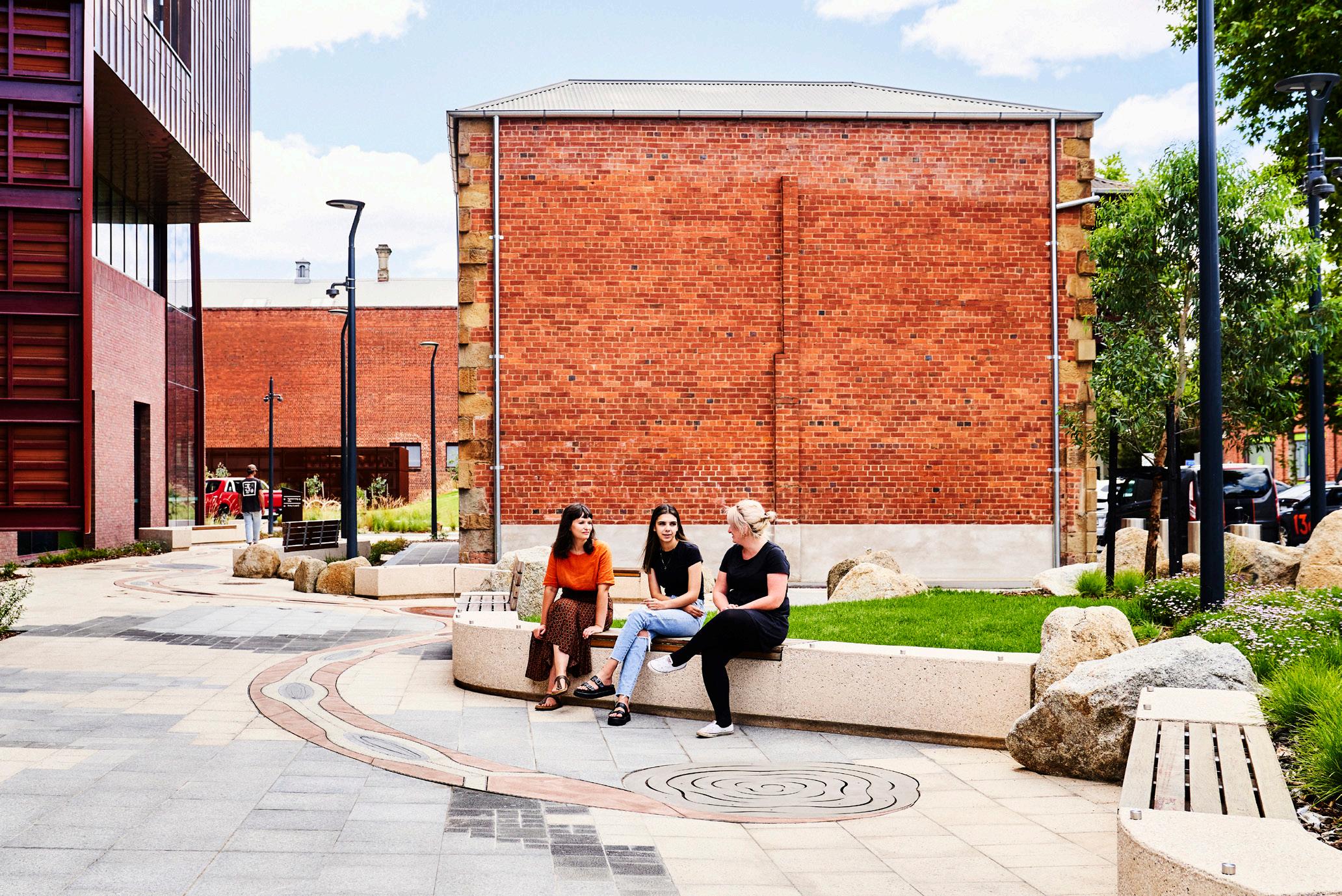
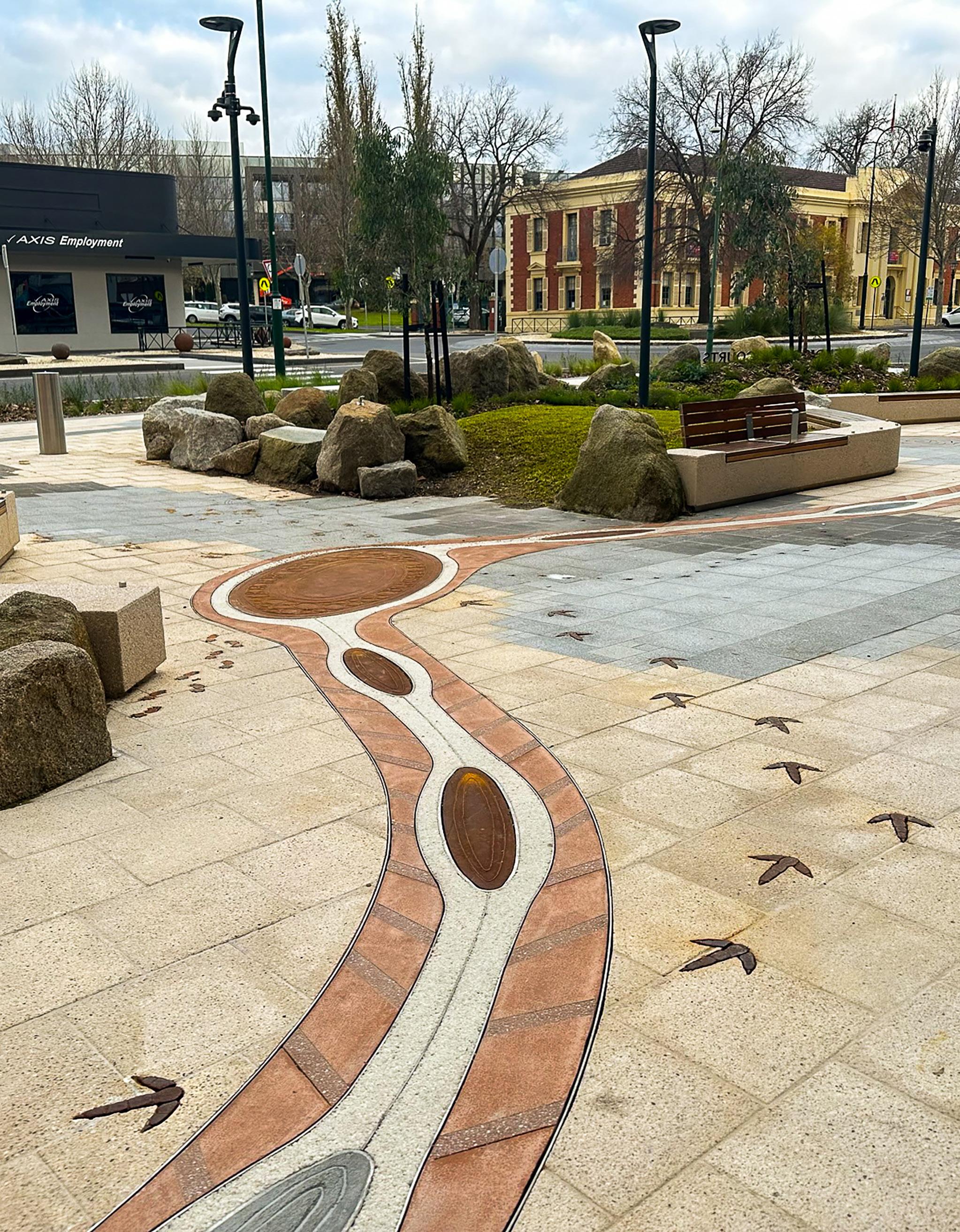
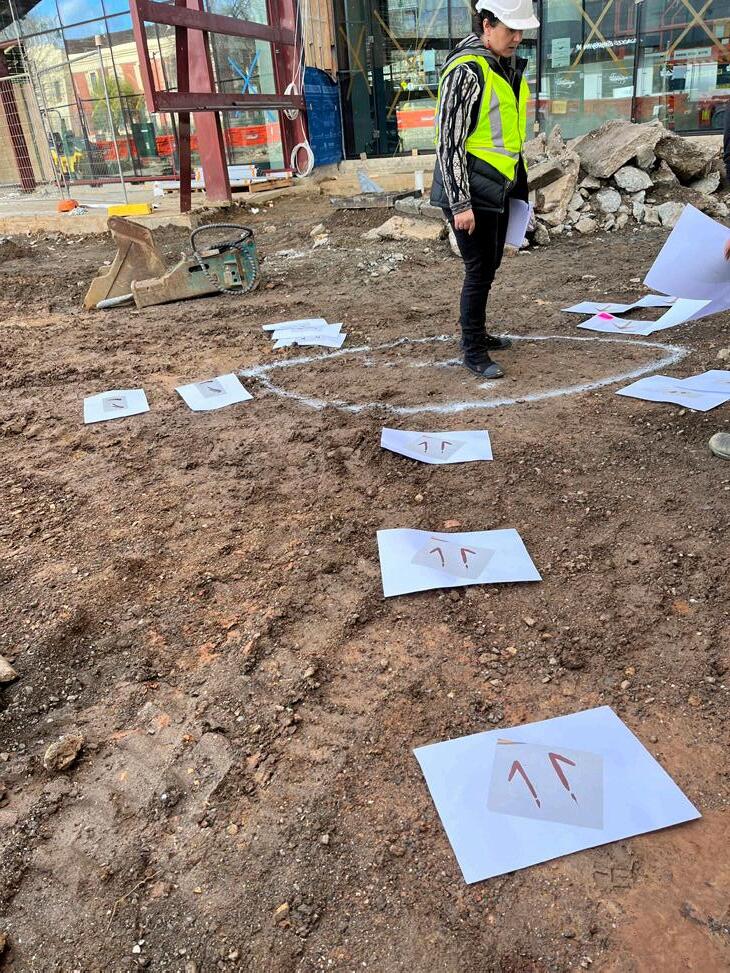

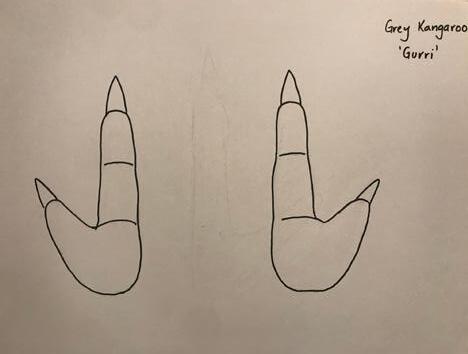
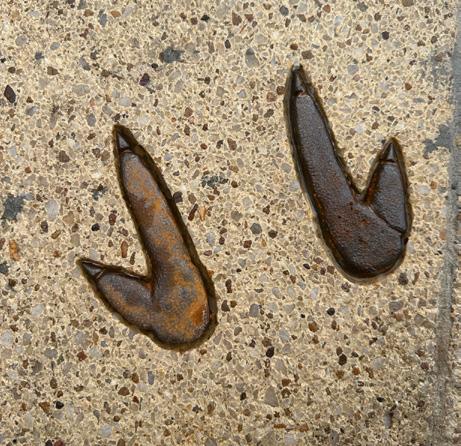

Our Reconciliation Journey

The reconciliation journey of ASPECT Studios continues to evolve in line with the deepening relationships developed by many of our people.
ASPECT Studios are committed to a more comprehensive Connection to Country (C2C) Strategy. The Strategy outlines a series of actions and initiatives being undertaken across our Australian Studios and is aligned to the Australian Institute of Landscape Architects (AILA)’s ‘Reflect’ Reconciliation Action Plan (RAP) .
The ASPECT Studios C2C Committee, which comprises members from each studio across Australia, is actively working toward the delivery and ongoing evolution of the Strategy.
The Strategy also provides continued support for ASPECT Studios employees leading and being an integral part of the AILA National and State-based Connection to Country Committees.
ASPECT Studios’ C2C Strategy is important because:
• AILA has embraced the initiative of developing a RAP and we need to lead a ‘best practice’ approach
• Many government departments require a level of cultural awareness and understanding, which is fostered by the Strategy
• We need to continually advocate to our clients for the importance of culturally appropriate processes
• We need to understand the importance of Indigenous-led design principles and protocols
• Knowing and understanding the cultural stories of Country and of the local community’s connection to them brings a new way of seeing and understanding to the project
• It facilitates the nurturing of relationships with Traditional Custodians
• We need to create opportunities within our practice and project processes to build capacity, by actively creating on-going employment and training opportunities for First Nations people, especially the younger generation
ASPECT Studios
Connection to Country Committee
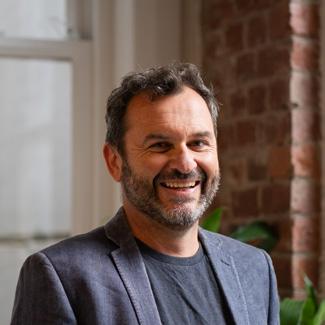
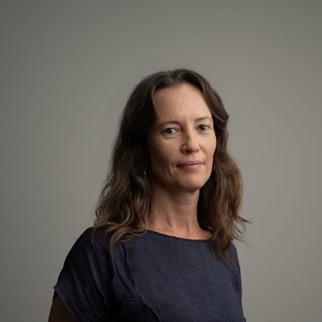
Megan Salom | Associate Whadjuk Noongar Boodjar (Country)
Tim Conybeare | Studio Director Kaurna Country
“I feel honoured to have had the opportunity to get to know key members of our First Nations communities across South Australia and beyond. Through those relationships I am beginning to gain a deeper understanding of Country and how important that is in shaping my design practice.”
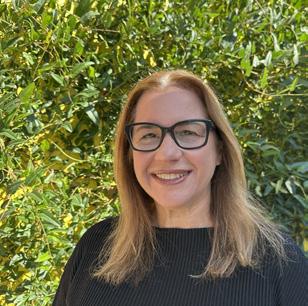
“For me, supporting First Nations’ caring for Country is as much a personal journey as a professional one. I value and endeavor to listen and feel deeply, observe, and be open to new learnings and new ways of thinking. These experiences feel like the building of layers. Layers of awareness, respect and the acknowledgment of truths. They also build connections and meaningful relationships.”


Lyndon Slavin | Associate Kaurna Country
“My hope is with deep listening, integrity, and walking together alongside Traditional Owners and First Nations collaborators, we can authentically center Country in planning and design for enduring solutions that genuinely heal Country and restore community connection.”
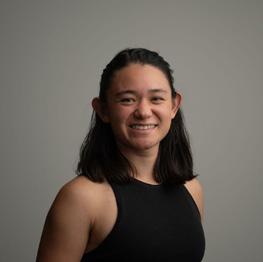

Bianca Pineda | Associate Studio Director Gadigal Country
“Working with First Nations designers has transformed my worldview - not just in design but in the way I move through Country. In so many ways, designing with Country has given more meaning to my practice.”
Anne-Marie Pisani | First Peoples’ Partnerships and Design Lead Wurundjeri Woi-Wurrung Country
“I feel extremely priviledged to not only work alongside and learn from Traditional Custodians almost everyday, but even moreso for the many strong friendships I have developed. For meits about deepening my own understandings and how it influences the way I practice towards creating better outcomes for Country and community – both now and for the future.”
Jesse-Jane Van Zyl | Architectural Designer Whadjuk Noongar Boodjar (Country)
“Language teaches you so much about a culture. Noongar is gorgeous song-like language that can sum up a complex statement with just one word. Boodja, nidja boodja, kwobidak boodja, nidja noongar boodja. Country, this Country, beautiful Country, this is Noongar Country. Learn to respect it, take care of it and in turn it will care for you.”
Matthew Durning | Studio Director Yagara and Turrbal Country
“We are extremely lucky to have the opportunities to learn from a diverse range of First Nations groups. We continue to cherish our opportunities to listen and learn from their deep understanding of country which helps inform and encourage us to advocate and make choices that will ensure the well-being of the planet and its inhabitants for generations to come.”
Adam Kiekebosch | Co - CEO Wurundjeri Woi-wurrung Country
Valter Viera | Co - CEO
Sacha Coles | Global Design Director Gadigal Country
Kirsten Bauer | Global Design Director Wurundjeri Woi-wurrung Country
